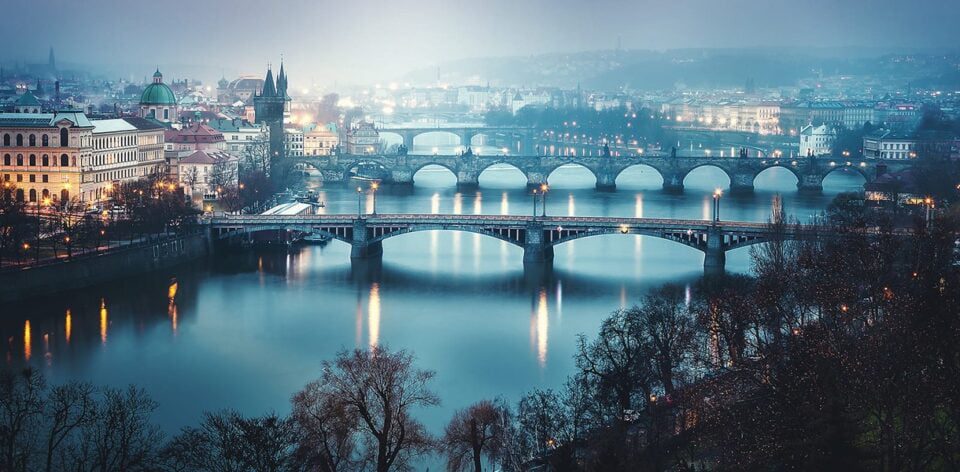Prague, with its picturesque and romantic charm, boasts historical and poetic significance in every stone of the Prague Castle and Lesser Town. The city attracts travelers with its luxurious palaces, magnificent old bridges, museum masterpieces, famous beer, and delicious cuisine. After enjoying the historical beauty of the Czech capital, many tourists seize the opportunity to embark on a one-day trip beyond the “Golden Prague.”
Having seen the attractions of the city, you can follow their example and make a short journey to unique places in the Czech Republic. Considering Prague’s central location in Eastern Europe, you have the chance to cross the border and visit historically interesting cities in Austria and Germany, located just a few hours away. Here are some of the best options for a one-day trip from Prague and what to see in these places.
Karlštejn Castle
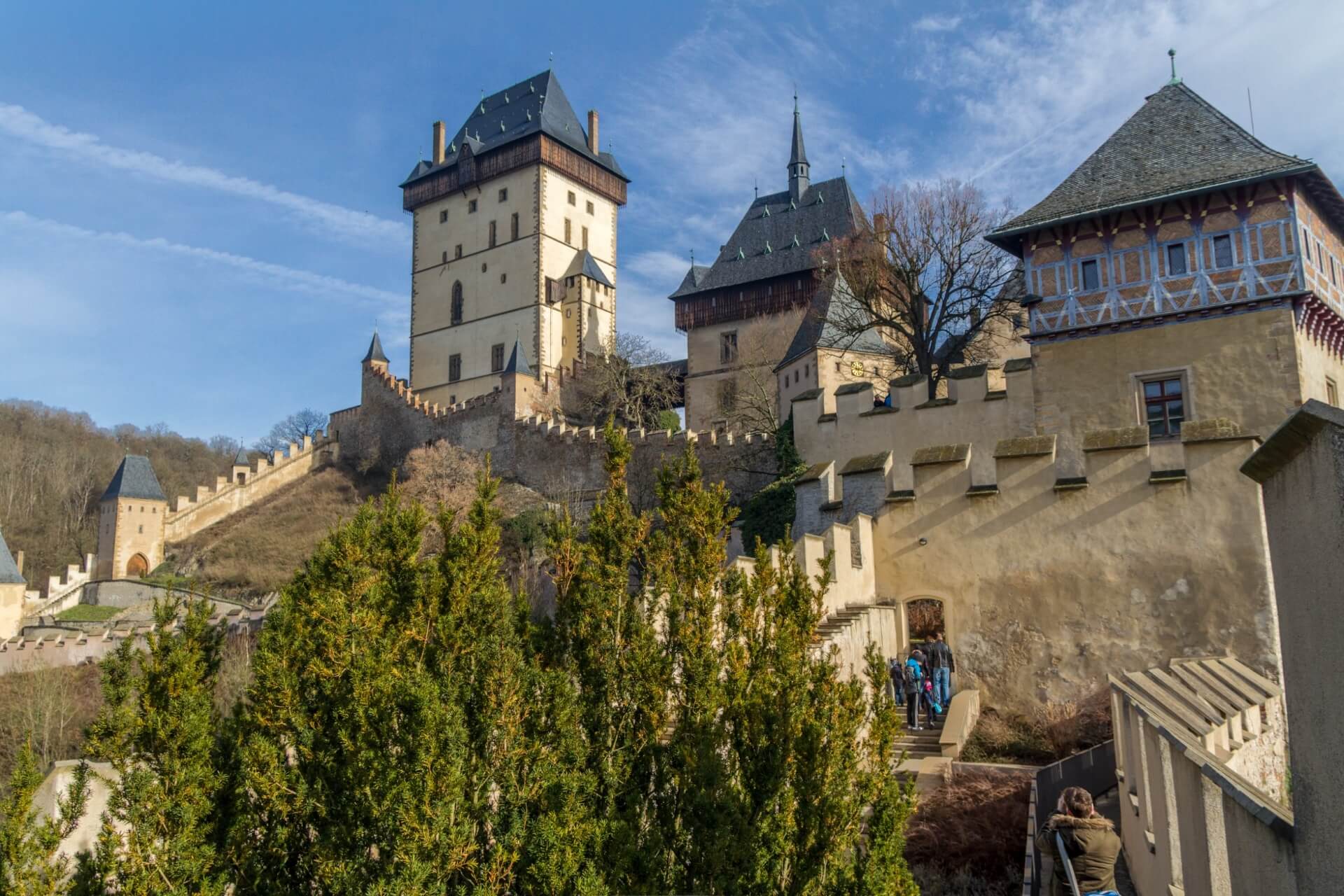
A fascinating castle with a rich history, it is very easy to reach. Trains depart every half hour from Prague’s main station, passing through the village with the same name as the castle. The distance from Prague is only 28 km. The castle was built in the 14th century by order of King Charles IV. It was to house the royal residence and treasury. The location was perfect: natural barriers protected it from attacks.
A river flowed nearby, and the castle itself was decided to be built on top of a cliff. Since then, the castle has had to withstand sieges from enemies: first the Hussites, then the Swedes. Over the centuries, the castle changed owners. At one time, it even housed a boarding school for noble girls.
Tourists have been able to visit Karlštejn since it became the property of the Czechoslovak Republic. During your visit, you will see the king’s private chambers, the castle’s interior, particularly the Marian Tower. You will visit the Chapel of the Holy Cross and climb the steps of the Great Tower.
Konopiště Castle
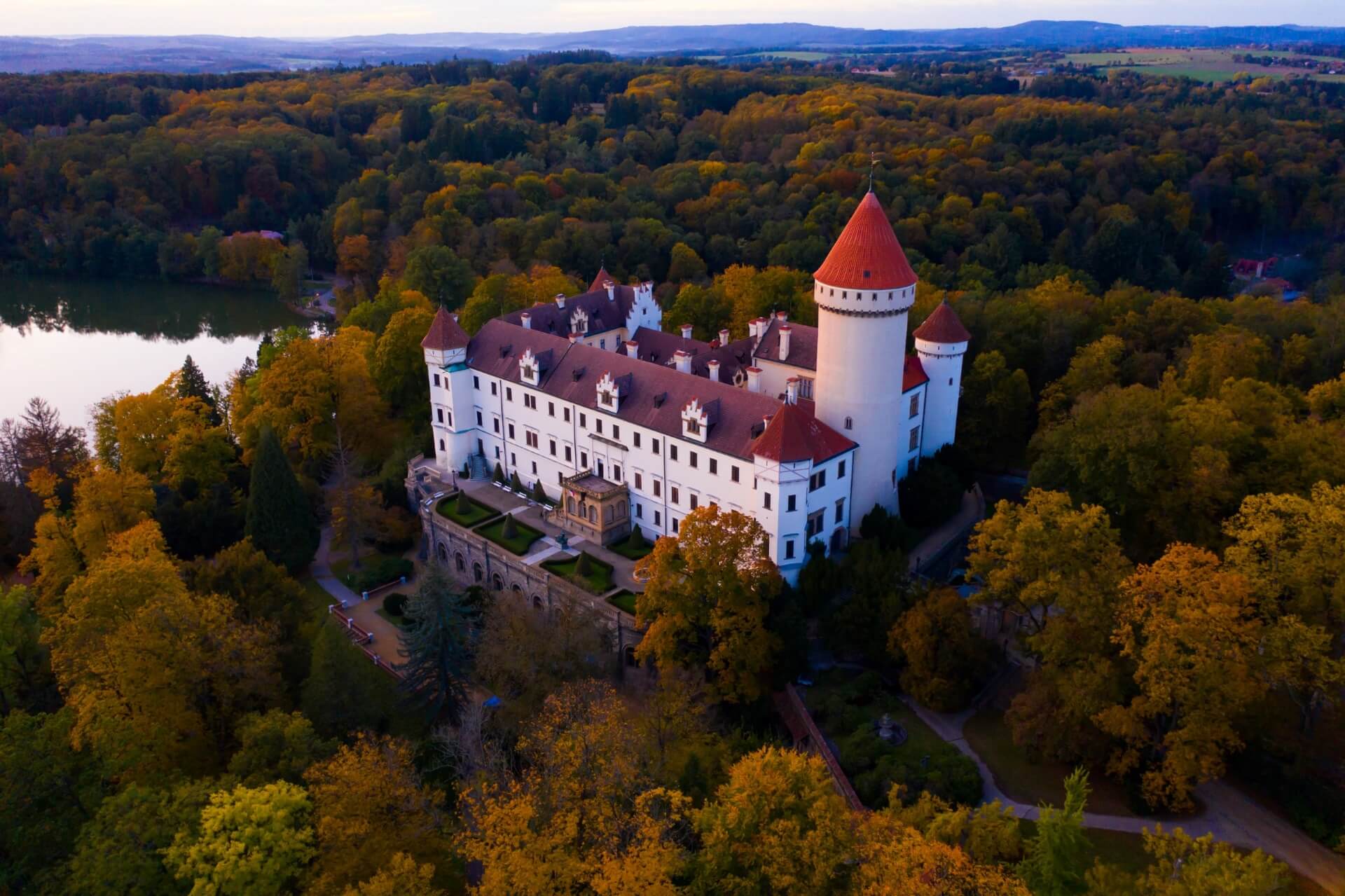
This large castle will be appreciated by all lovers of Gothic architecture. As a true fortress, it is protected from enemies by powerful walls and deep moats. Inside, however, it is a real paradise with a beautiful park. Here, fountains of crystal water gush, peacocks stroll leisurely, and elegant sculptures delight the eye.
In the castle itself, you can view collections of paintings, crystal items, and rare weapons. The most romantic owner of Konopiště was Crown Prince Franz Ferdinand.
He bought the castle to hide there with his beloved woman. Having renounced his right to the throne, Franz Ferdinand entered into a morganatic marriage. Today, guests of the castle can also have a wedding there. Konopiště is visited in the warm season – from April to the end of October. During the tour, you will see Franz Ferdinand’s chambers, the library, the weapon collection, and the chapel. It is best to reach it by train to the town of Benešov.
Kutná Hora
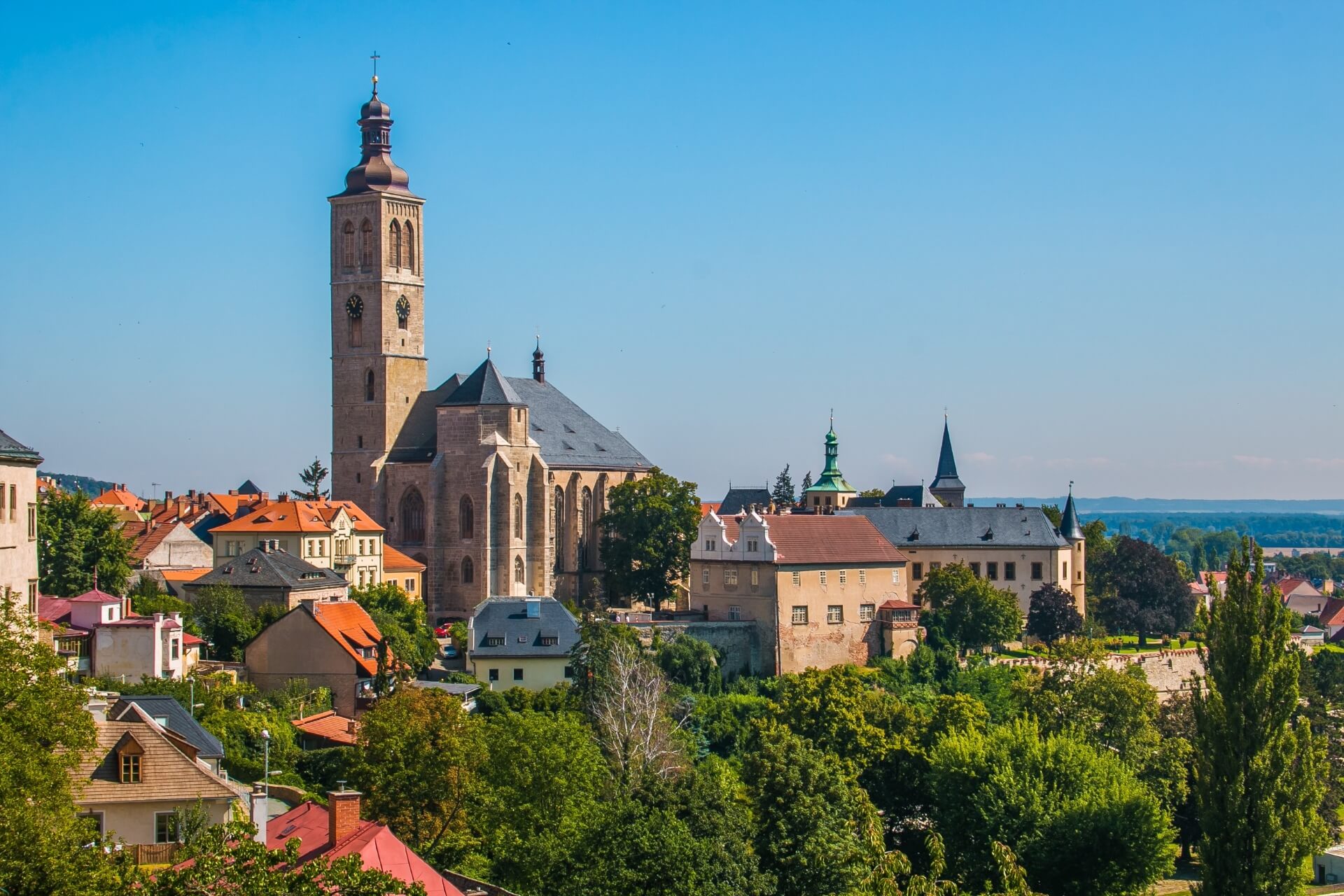
From its name, one might think that you will be climbing a mountain here. In fact, it is the name of an ancient town located 66 km from the capital of the Czech Republic. Kutná Hora is famous for its picturesque surroundings and numerous attractions. This town can also be called “silver.”
A silver deposit was discovered here in the 13th century, and since most Czech coins were minted from this metal, a Mint soon appeared here. Kutná Hora itself turned into a sort of state treasury. Visitors to the town can go down a “silver mine,” visit the Italian Court, and view exhibits in the Hrádek museum.
And, of course, you won’t want to put your camera down on the streets. Here and there are cathedrals, unusual houses, and beautiful flower beds. Why do some tourists feel a sense of horror in this medieval town? It is home to the Bone Church or the Chapel of All Saints. It is located in a cemetery. About 40,000 human bones were used to create the interior.
In Kutná Hora, you will also see the beautiful old St. Barbara’s Cathedral, decorated with frescoes. You can even hear organ music here. Another famous church is dedicated to the Assumption of the Virgin Mary. Its extraordinary architecture, making the church seem bathed in light, has led to it being called the “dwelling of light.”
Český Šternberk Castle
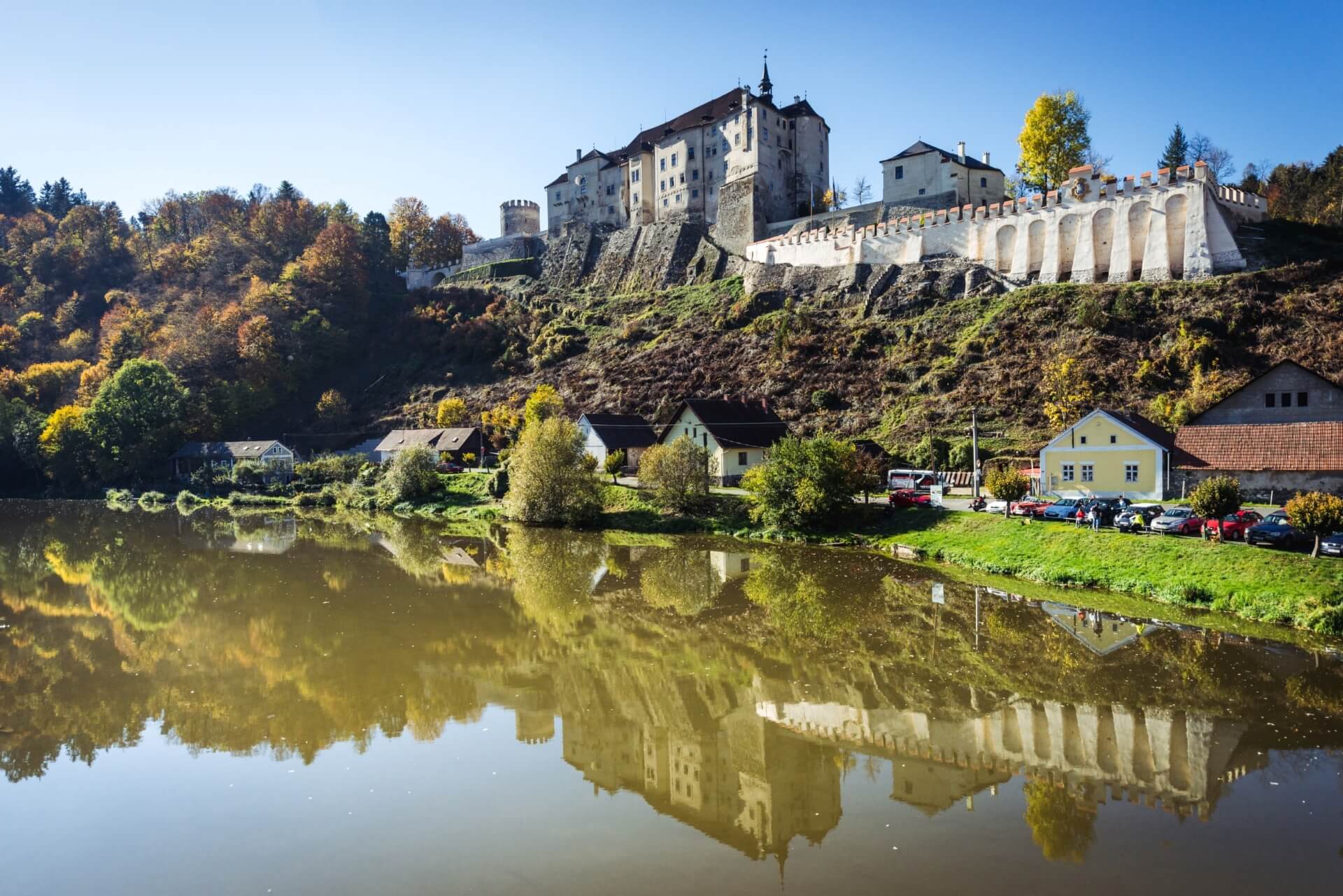
From Prague, the ancient town of Český Šternberk is only 60 kilometers away. The small town stands on the banks of the Sázava River, above which, on a cliff, rises a medieval castle built in the Gothic style in the mid-13th century. The castle is named after the Sternberg family, whose coat of arms is depicted on its facade. The bastion Hladomorna, built to protect the castle in the 15th century, can be seen on the south side. The construction of the preserved three-story tower dates back to this time.
The interior has preserved stuccos and room paintings from the 17th century, amazing tourists in the Golden Salon and the Knight’s Hall, formerly a chapel. There, you will see 16th-century furniture and large 18th-century crystal chandeliers, weighing about three hundred kilograms. In the Women’s Salon, the setting of Rococo-era furniture will interest you, and in the Yellow Rooms, it is a rare opportunity to immerse yourself in the atmosphere of the Louis XVI era with furniture and unique stucco of that time.
An artistic value is represented by a collection of rare copper engravings from the 30 Years’ War era, collected over many years by the castle’s owners, a collection of paintings and weapons. A descendant of the Sternberg family now lives and works in the ancestral castle. The castle grounds have a beautiful park, where it is pleasant to rest after a tour.
Karlovy Vary
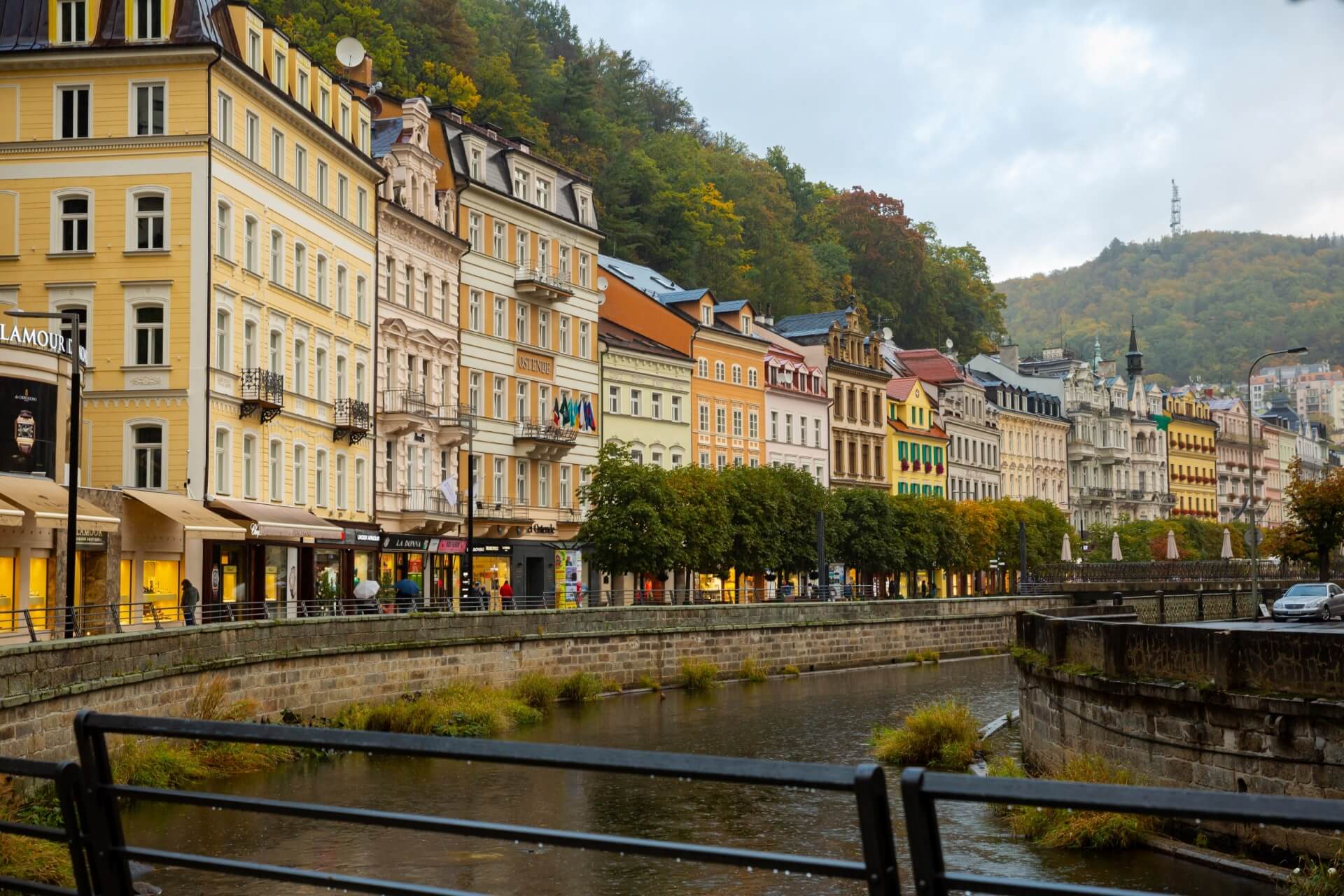
This world-famous city also traces its origins to Charles IV, who, during a hunt, saw a beautiful valley with healing springs. From Prague to Karlovy Vary, you can take an intercity bus, and the journey time is about 2 hours. A true architectural gem is the city theater, built in the 19th century in the then-popular exquisite Neo-Baroque style.
Its curtain is hand-painted by famous artists. Famous artists constantly perform at the theater. It is worth visiting the observation tower with the poetic name Diana. You can ascend it using an old funicular. From here, you have a wonderful view of the city. Guests of the city also inspect Valec Castle, dating back to the 14th century, a beautiful Gothic-style building.
There are a brewery and a charming park here. One of the main attractions of Karlovy Vary is the Church of St. Mary Magdalene. The appearance tourists see today dates back to the late 18th century, though it was founded by the Crusaders in the 14th century. And, of course, visitors to the city visit the so-called colonnades, where mineral water springs flow. Children will especially enjoy the Christmas Museum – a place where the holiday reigns all year round.
Tábor
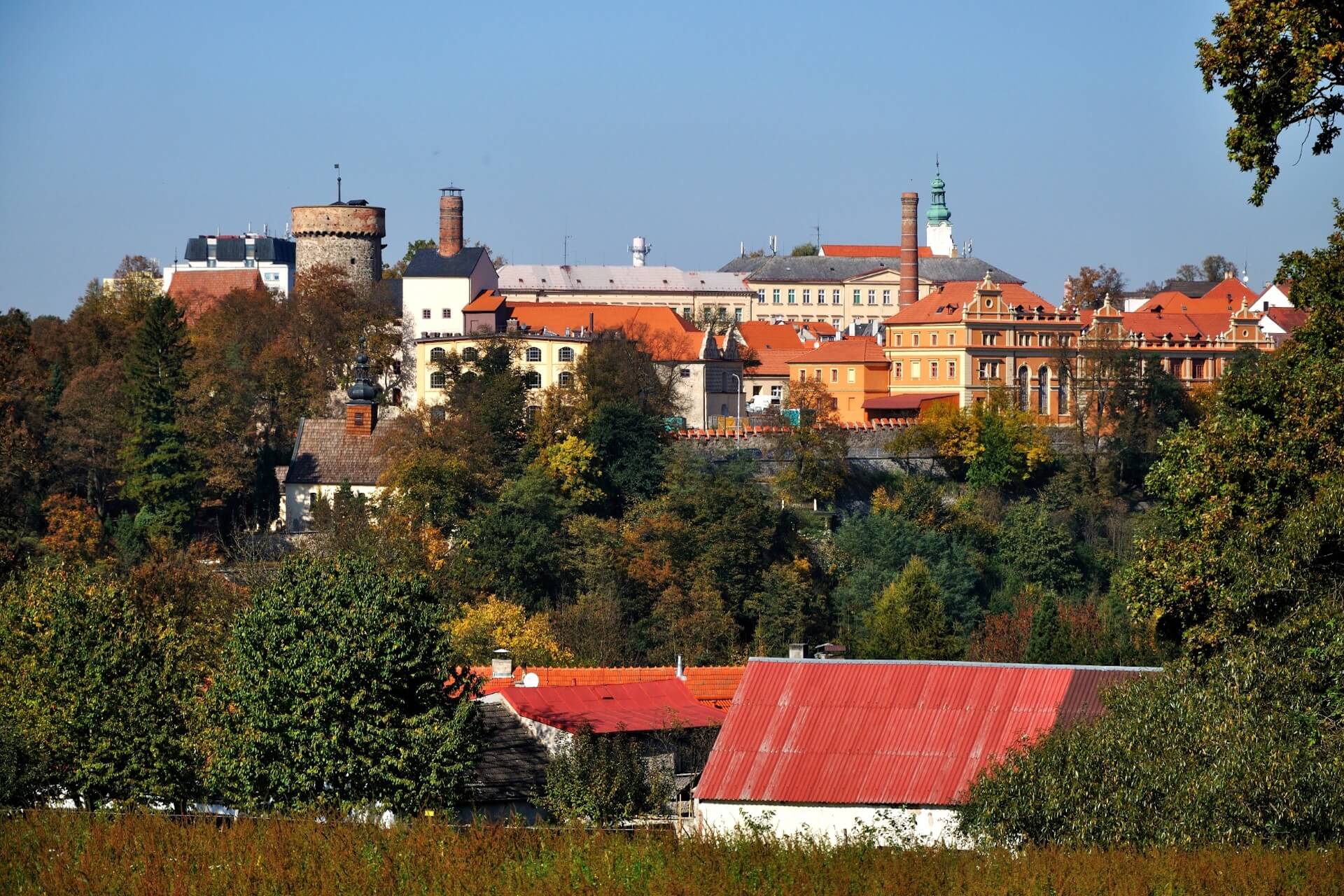
A popular tourist city in southern Bohemia, Tábor began construction in the 15th century on the site of an old settlement. In Czech, “tábor” means “fortification, camp.” In the 15th century, Tábor became a royal city. Visitors inspect the town hall building, dating back to the 16th century, which now houses a museum. They also visit the Church of the Transfiguration of the Lord, built at the same time as the town hall.
The Gable House from the 16th century is also preserved. City attractions include the tower of Kotnov Castle and the famous Bechyně Gate, erected in the 15th century. In Tábor, monuments to the main heroes of the Czech people – Jan Žižka and Jan Hus – are established. The bravest tourists can walk through the underground corridors where the Hussites hid.
Plzeň
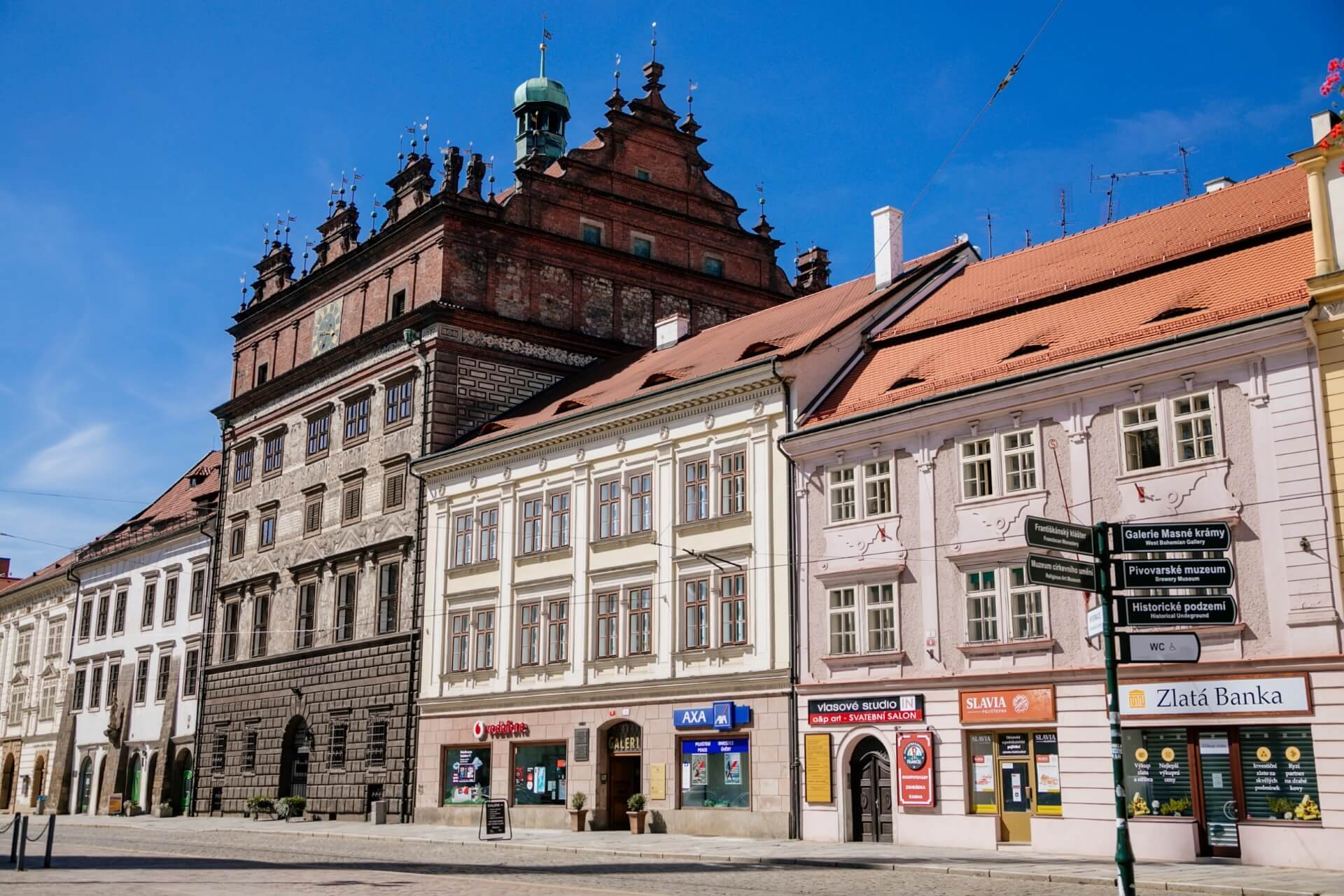
A rather large city, Plzeň is known to Russians largely due to Pilsner beer. The brewery where this blessed drink is produced was opened by a German banker, Bleischroder. Therefore, tourists are attracted to the Brewery Museum, as well as numerous cafes and bars offering Pilsner and other types of beer.
At the same time, Plzeň is a very beautiful old city. Among its attractions are Republic Square with its beautiful fountains and St. Bartholomew’s Cathedral. The huge underground, once used as storage, and the water supply system are popular with tourists. The car factory where Škoda cars are produced is located here. Visitors are also welcomed at the Armory and the Museum of Western Bohemia.
Liberec

Liberec is an ancient town founded in the 14th century, having experienced all the conquest wars and national uprisings along with the Czech Republic. Many Germans live here, and at one time, Liberec was even part of Germany. Today, it is a developed city that is of great interest to tourists of all ages. Mountain ski lovers will find excellent slopes for skiing in the cold season, and children will enjoy the water park and amusement park.
Those who appreciate Czech antiquity will admire the museums, the town hall building, and the local castle. And everyone will love the picturesque landscapes surrounding the city. To see Liberec from a bird’s-eye view, you should climb to the observation deck next to the city television tower. You will be lifted there by a cable car.
It is worth capturing the Liberec Castle in photos. In the Regional Museum, you will see a rich collection of paintings, many of which are works by French artists. The North Bohemian Museum, which Russians would call a “local history museum,” has exhibitions on the region’s history. The amusement park has many interactive platforms that will charm young tourists.
České Budějovice
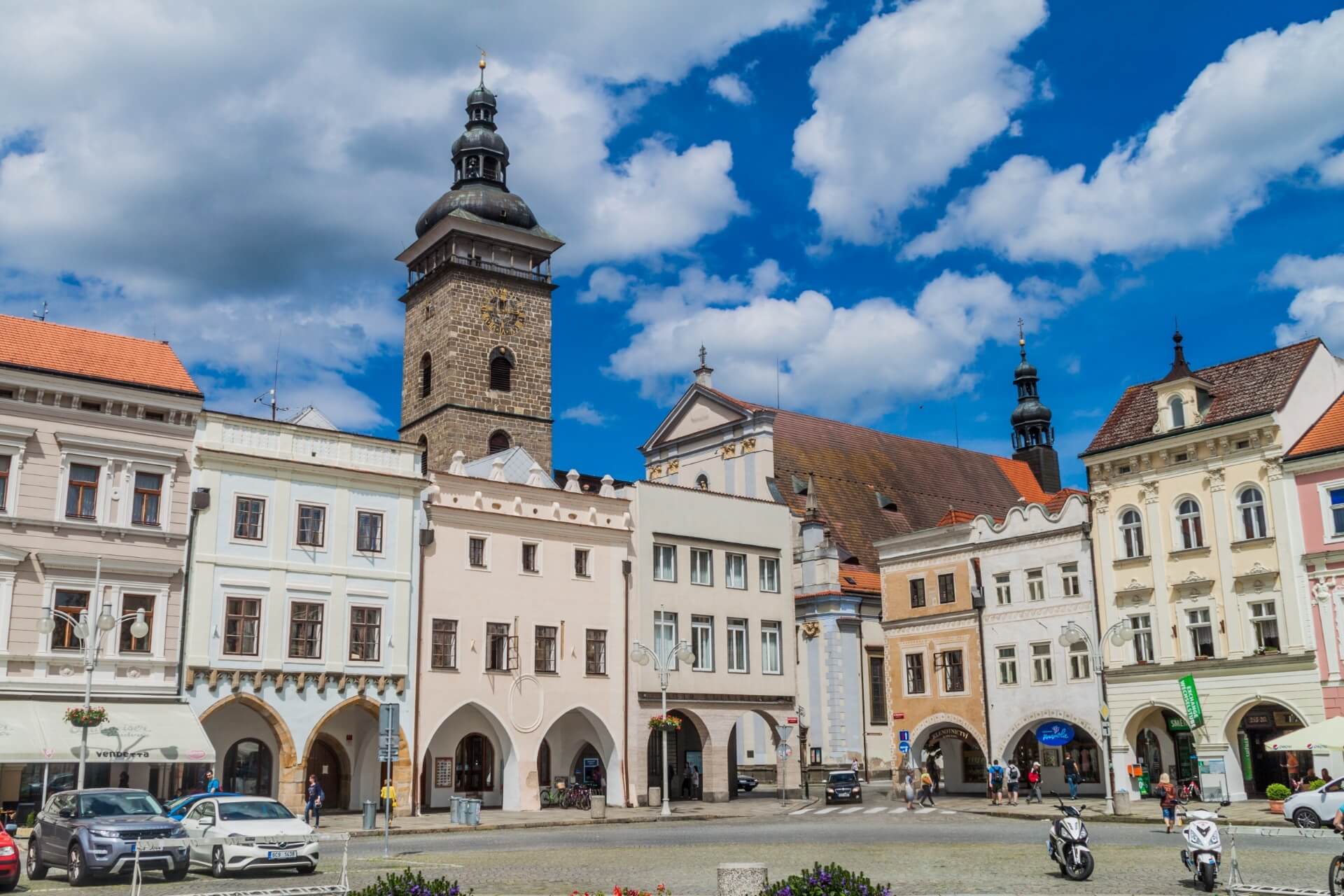
Another Czech city famous for the production of Budweiser beer. But it is better to visit a pub or cafe after seeing all the attractions and giving your feet a rest. The historic center of the city is beautiful, with the old town hall building decorated with sculptures.
The Black Tower, over 70 meters high, impresses tourists. Believers and lovers of history and architecture should visit St. Nicholas Cathedral. Children and young people are delighted with the large fountain, at the center of which stands a statue of Samson.
Guides also show visitors the old Dominican monastery, the Church of the Presentation of the Virgin Mary, and the museum of the royal dynasty of the Rudolphs. České Budějovice attracts tourists with its fairs. There are also many small shops where you can buy handmade souvenirs.
Český Krumlov
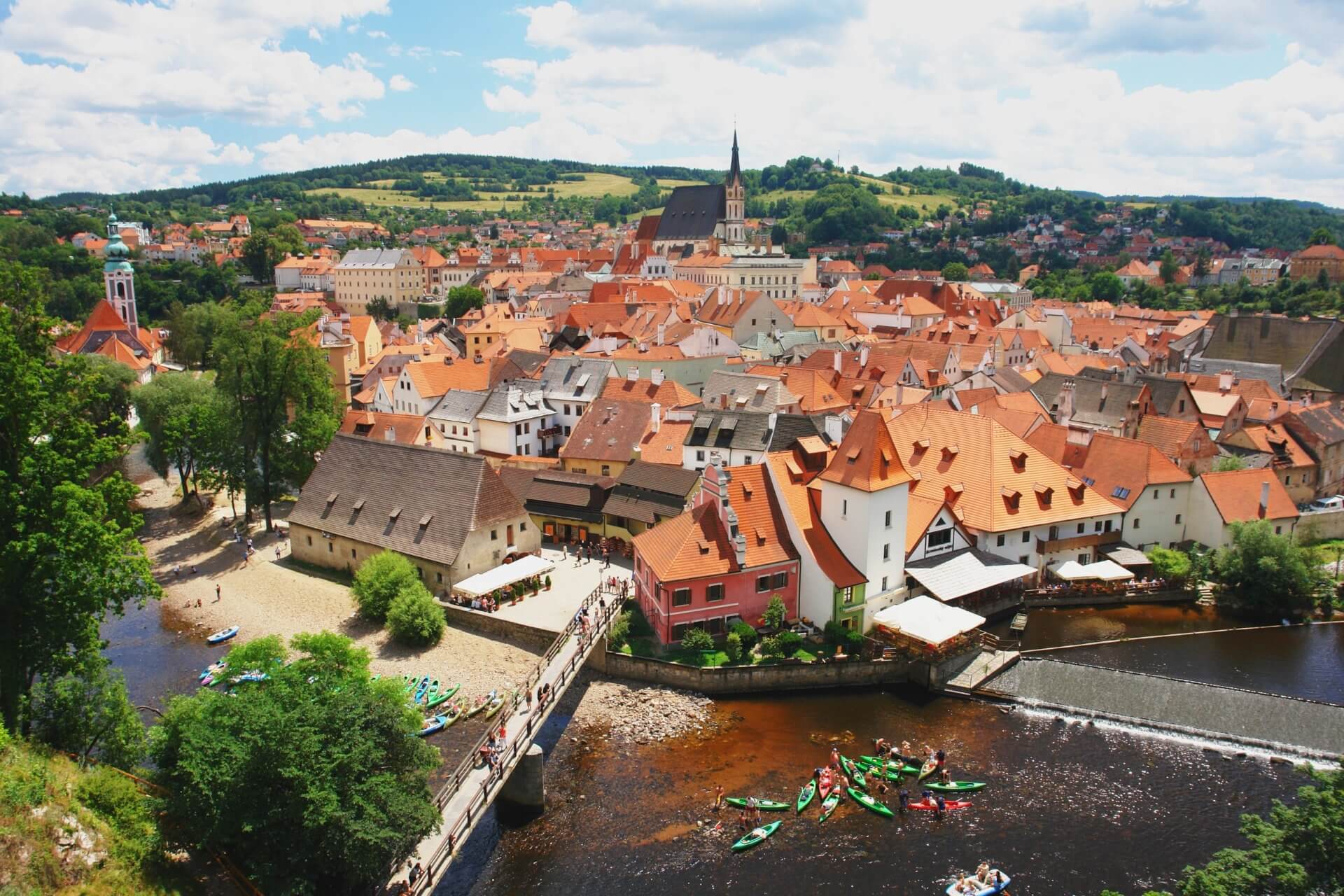
This city began to be built in the 13th century, and its coat of arms still features a red rose – the same one that was on the coat of arms of its former owners, the feudal Rosenbergs. There is much to see in Český Krumlov! Local attractions include Krumlov Castle, occupying a vast territory of up to 10 hectares.
Construction began in the 14th century, continuing over three centuries. The Cloak Bridge from the 18th century is unusual, a real three-story gallery. As in every old city, there are several churches here, the most famous being the 14th-century Church of St. Vitus, decorated with frescoes. The Church of the Body of Christ was built in the 15th century, and the Minorite Monastery was completed in the 17th century.
The town hall building dates back to the 16th century. If you are lucky, you can catch a performance in the 18th-century theater, which hosts shows only three times a year. If you wish, you can take a taxi to the old monastery, 10 km from the city.
Hluboká nad Vltavou Castle
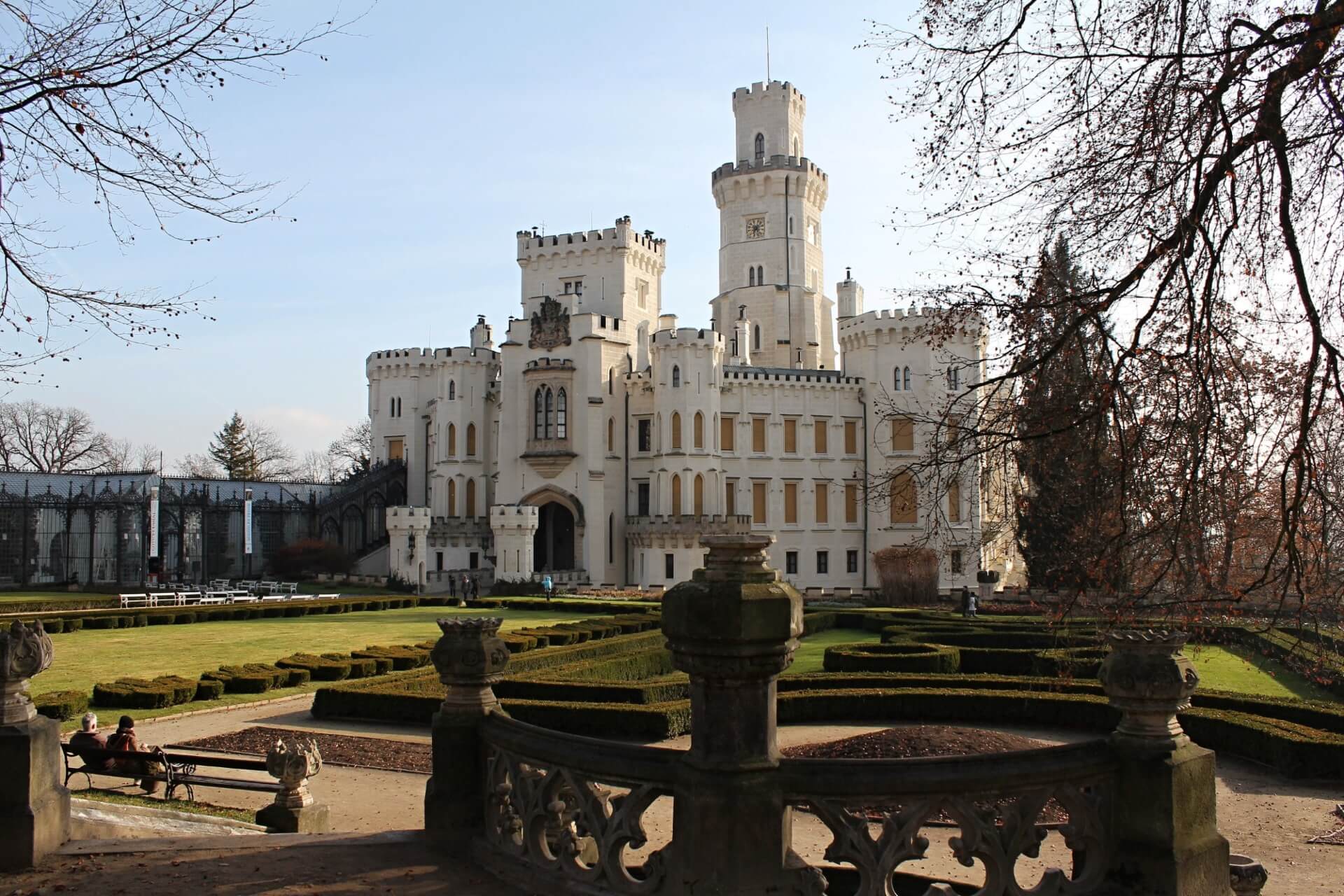
140 kilometers south of the Czech capital, near the town of Hluboká nad Vltavou, stands a snow-white Gothic ensemble of a medieval castle built in 1235. The castle attracts attention with its turret battlements, intricate facade decor, balconies, bastions, and snow-white columns with warrior figures.
The luxurious interior of the rooms, decorated with paintings, frescoes, and statues, brings indescribable delight. The castle complex, handed over to the National Museum of the Czech Republic, has 140 rooms, a dining room for 72 people, the owners’ bedroom, and a library with 12,000 books.
Tours follow five routes: the main route, the winter route, private apartments, the kitchen, and the observation tower. After admiring the castle’s interior, it is a pleasure to stroll through the landscaped park, rich in flower compositions and exotic trees.
It is reminiscent of the design of the park at the famous Windsor Castle, earning it the nickname “Czech Windsor.” It is more convenient to reach Hluboká nad Vltavou by rented car. By bus and train, you will need to make transfers. But believe me, your efforts will be worth it.
Ostrava
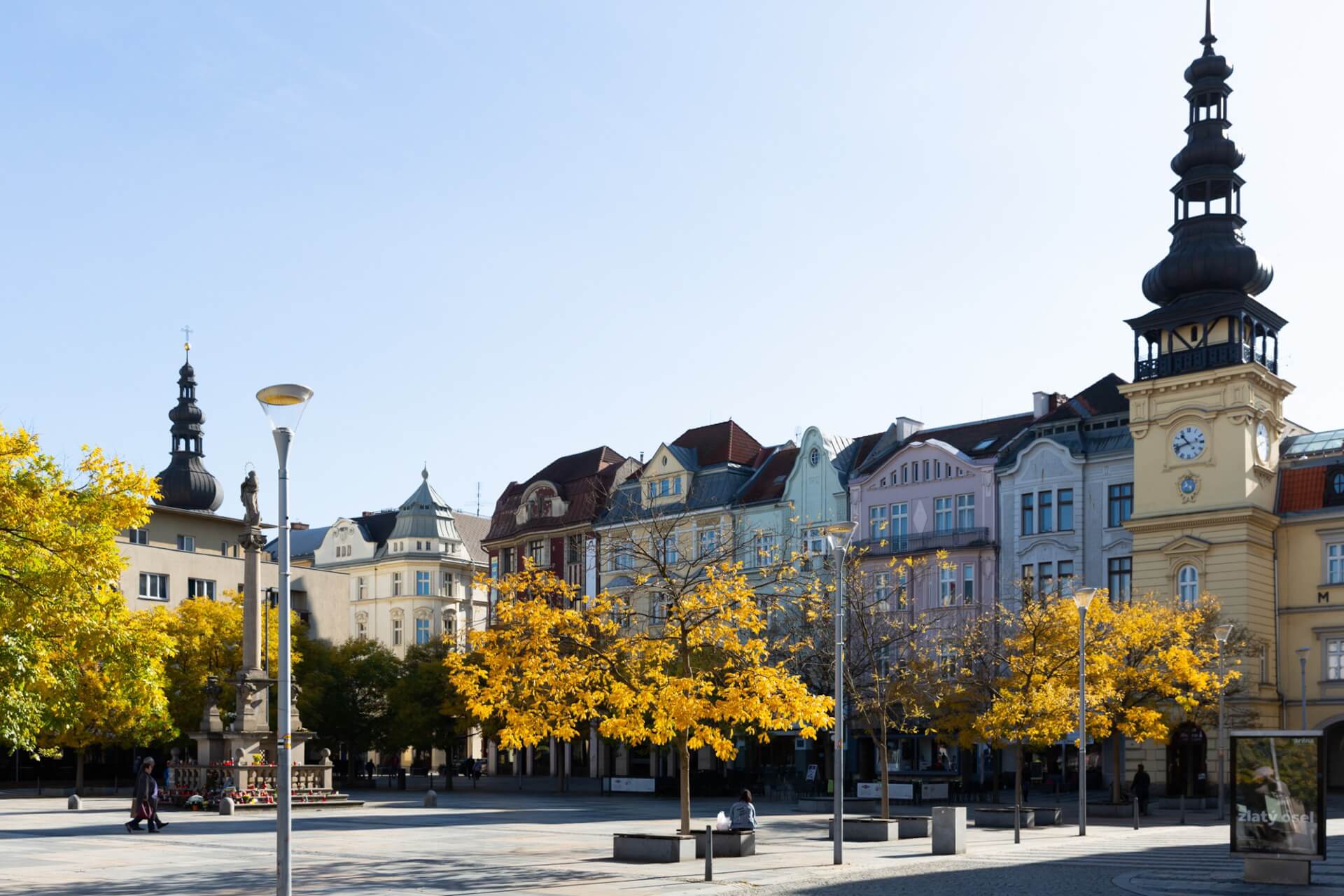
In terms of size, Ostrava is the third largest city in the Czech Republic, with over 300,000 inhabitants. It was founded in the 13th century. For a long time, it was primarily home to craftsmen and innkeepers serving travelers. In the 18th century, a coal deposit was discovered nearby, and the Northern Railway was built. Since then, the city’s rapid development began. One of the main attractions is Masaryk Square, where you will see the old town hall.
It is worth visiting the museum housed in it. The square also features a “plague” column – such monuments were erected by citizens in gratitude to saints when a deadly epidemic receded. The Church of St. Wenceslas, the Basilica of the Savior, and the Church of St. Catherine are beautiful. In the new town hall building, you can climb the observation deck and view the city from above. And, of course, visitors are attracted to the city’s museums. These include the Firefighting Museum and the Mining Museum.
Dresden
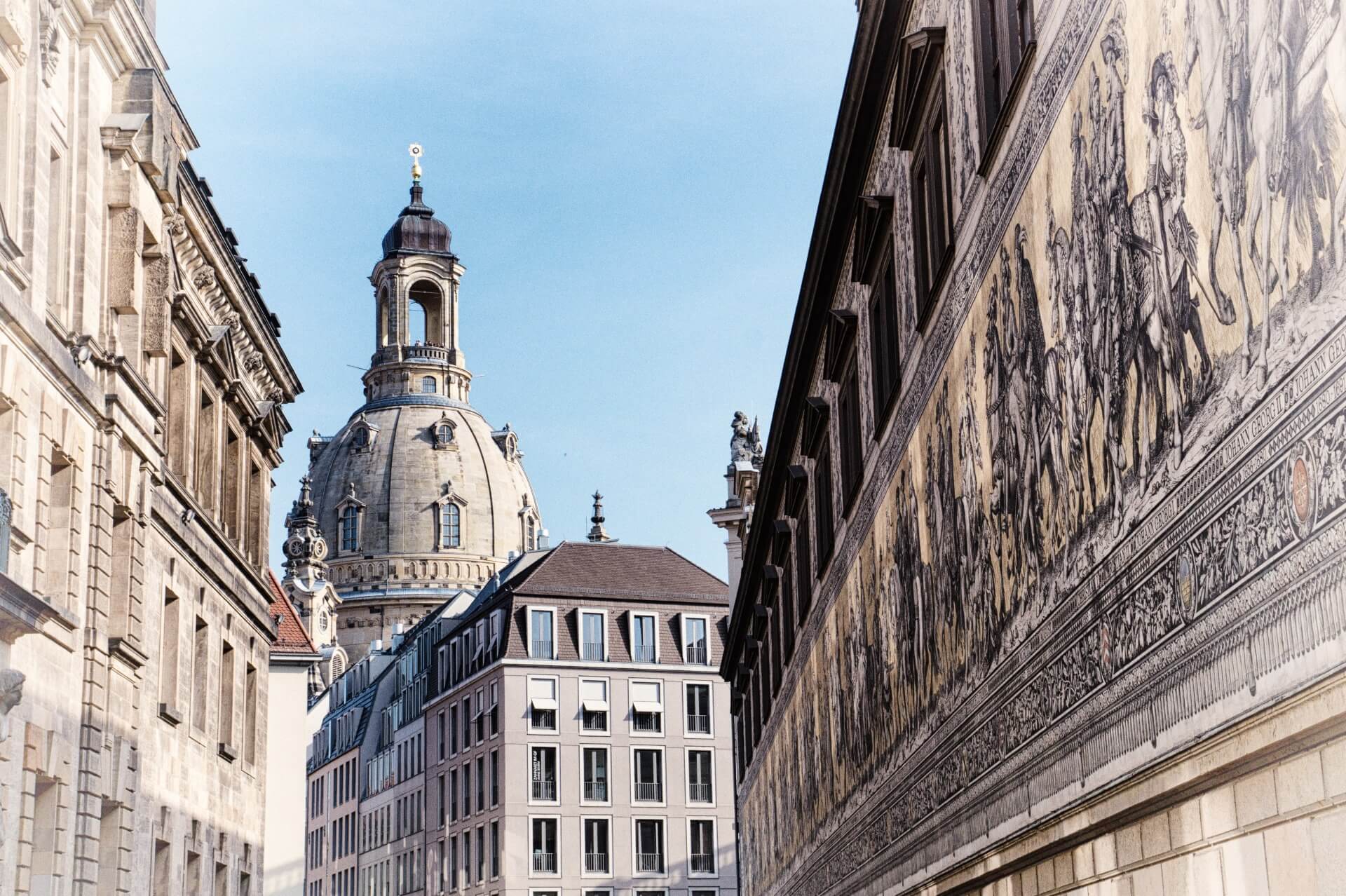
It is easy to reach Dresden and get acquainted with the main attractions of this beautiful city, founded in the 13th century. It is rightfully considered one of the main cultural centers of Europe. Dresden is 150 km from the Czech capital. What must you see? The old Church of Our Lady, reconstructed after World War II.
The Brühl Terrace, also known as the “Balcony of Europe,” the beautiful building of the Academy of Fine Arts. Visit the Zwinger Palace, built in the Baroque style in the 18th century. Here, the largest celebrations took place, with royal family members participating. You can view the art gallery, which includes works by Raphael. On Theater Square, you will see the Semper Opera House.
The Albertinum Museum, which houses paintings and sculptures, is worth visiting. You will surely want to take a photo at the tiled mural “Procession of Princes.” And fans of technology will be interested in the Volkswagen car plant. It is convenient to get there by train or intercity bus.
Křivoklát Castle
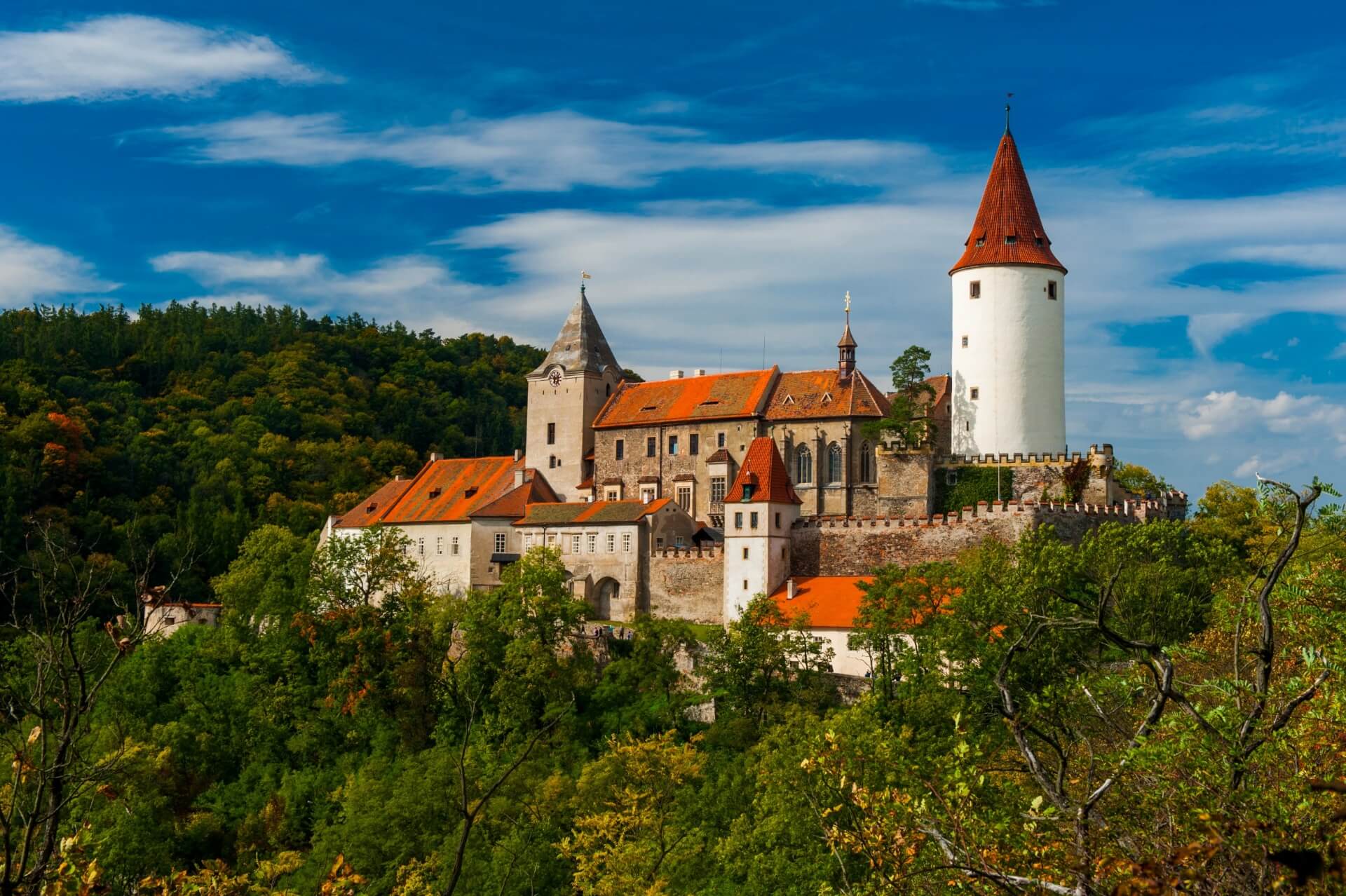
50 kilometers away is a nature reserve, where near the Berounka River, majestically stands the medieval Křivoklát Castle, protected by UNESCO. This is one of the oldest Gothic castles, serving for several centuries as the residence of Bohemian kings and princes. Much in Křivoklát deserves the attention of tourists.
You will be amazed by the enormous size and medieval atmosphere of the Royal Hall, crowned with a star-shaped vault, and the rich collection of weapons in the Knight’s Hall. Walking through the palace rooms, you will see original medieval wall paintings, forged window grilles, and stained glass windows. The art collection of the picture gallery and the library with 53,000 books is impressive.
Of interest is the collection of historical sleighs used by royal persons and the castle’s prison cells with medieval torture instruments. In the chapel, you will be impressed by the altar decorated with intricate carvings. You will admire the statue of Jesus Christ, surrounded by angels with golden wings, and the statues of the 12 apostles along the walls. To conclude the tour, you should definitely climb the observation deck of the 42-meter tower to take photos of the stunning landscape from above.
Sychrov Castle
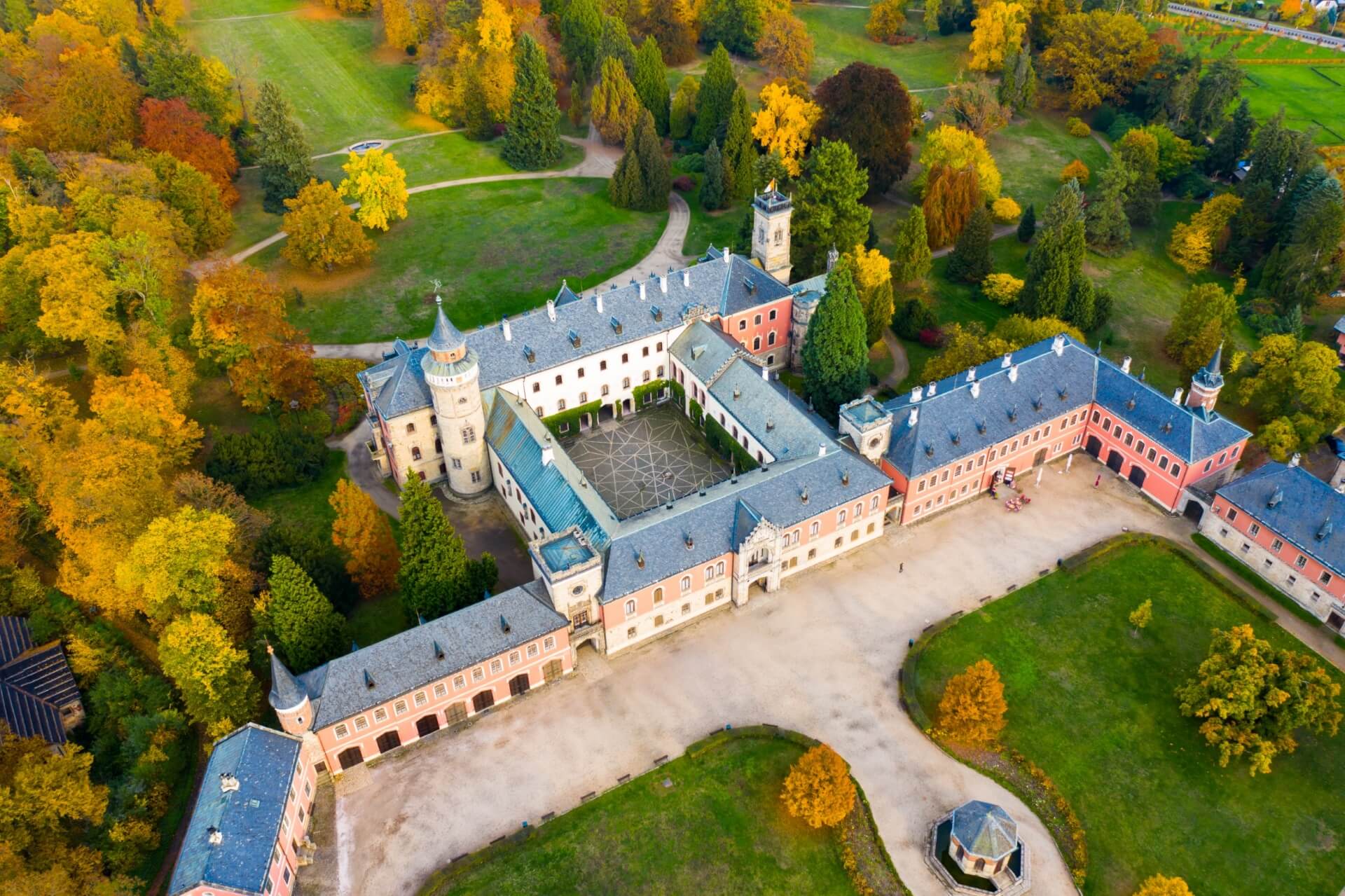
In northern Bohemia, 100 kilometers from Prague, near the “Czech Paradise” reserve, is the architectural gem of the country – Sychrov Castle, whose history dates back to the 15th century. Until the 19th century, it was a stone estate of a noble French knight, built in the Baroque style. Today, Sychrov’s exterior and interior are presented as they were during the height of the noble French Rohan family.
The castle walls are adorned with portraits of three generations of this family, totaling 242 paintings, and works by famous artists. The room interiors harmoniously incorporate exhibitions with weapon collections and antique furniture. Exhibitions of porcelain figurines, 14th-century miniatures, old Venetian glass, and ceramic items are of interest to history lovers.
Near the castle is a magnificent English park, laid out by Camille Rohan, a botany enthusiast. Shady alleys, well-kept paths, and a greenhouse delight the eye. Visitors to Sychrov are shown how falconry was conducted in the old days. On the park grounds, you will see the Chapel of Our Lady, a Chinese lake with an iron bridge, and the ruins of Arthur’s Castle, under which there are underground caves. The castle is surrounded by the legend of the Black Lady, a ghost who guards the treasures stored in the dungeons.
Turnov
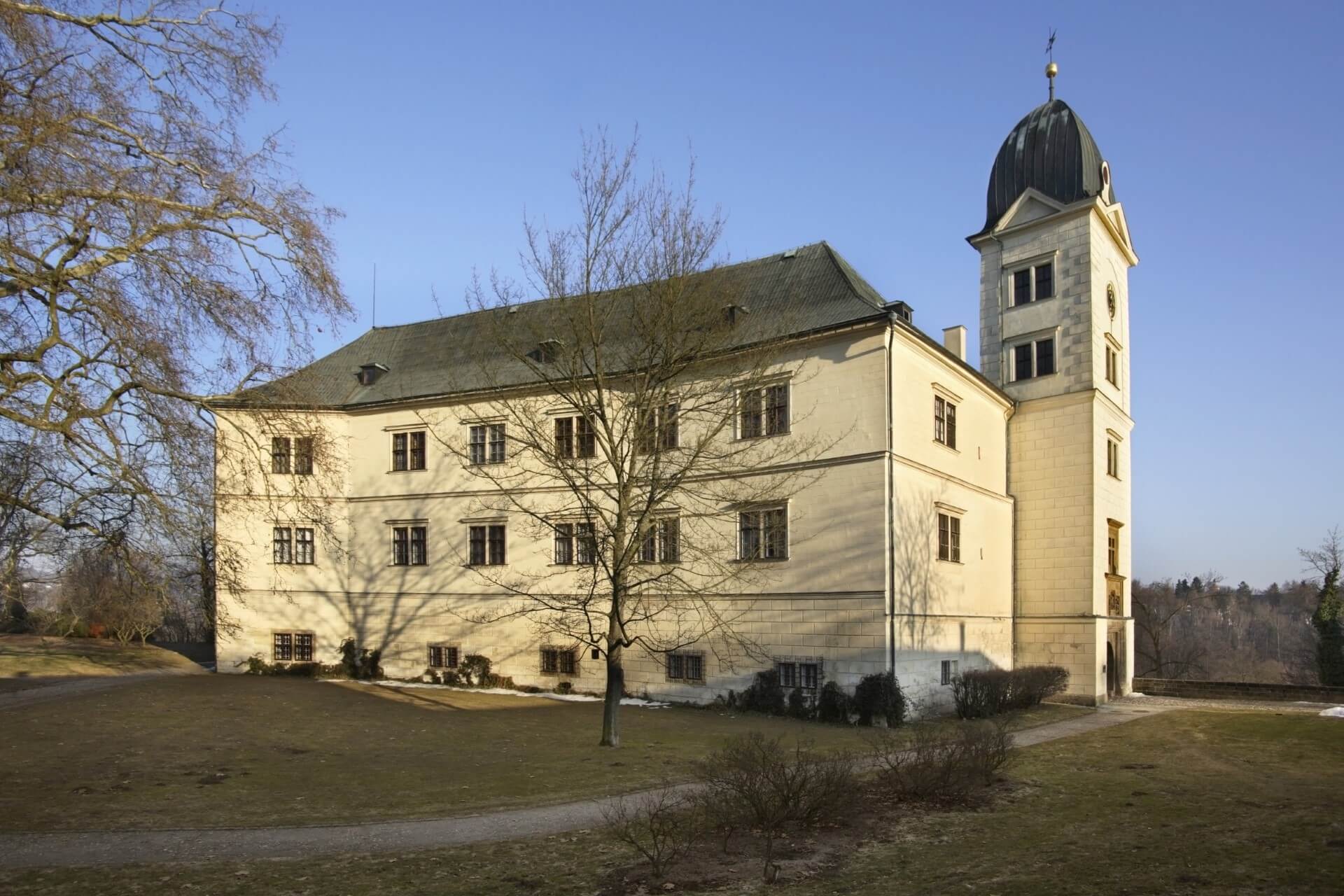
Prague is 88 kilometers from the ancient Turnov, founded in the 13th century on the banks of the Jizera River. The city owes its prosperity to the precious garnet, from which jewelry is made. Approaching Turnov, you will see the Church of St. Nicholas with a four-sided tower reaching a height of 25 meters.
The church, after many reconstructions, appears in the Baroque architectural style. In the tombstones placed in its walls, the genealogy of the Wartenberg dynasty, which owned Turnov from the 16th century, is traced. The largest neo-Gothic church in Europe, the three-nave Church of the Nativity of the Virgin Mary, built in the first half of the 19th century, is located in the city.
The town’s adornment is the old Hruby Rohozec Castle, presented in the late Classicist style, surrounded by a picturesque park. Its walls, laid in the 13th century, hold the secrets of numerous noble owners. Three excursion routes have been developed, through which in 1.5 hours you will learn its history and familiarize yourself with the interior of the library, dining room, richly furnished guest apartments, billiard and game rooms.
After finishing the tour with a walk in the park, head to the Czech Paradise Museum, where the entire history of Turnov is represented in the exhibitions, including a large collection of minerals and paintings by Czech artists. For women, the hall of jewelry with precious stones and red garnet will be a real delight.
Saxon Switzerland
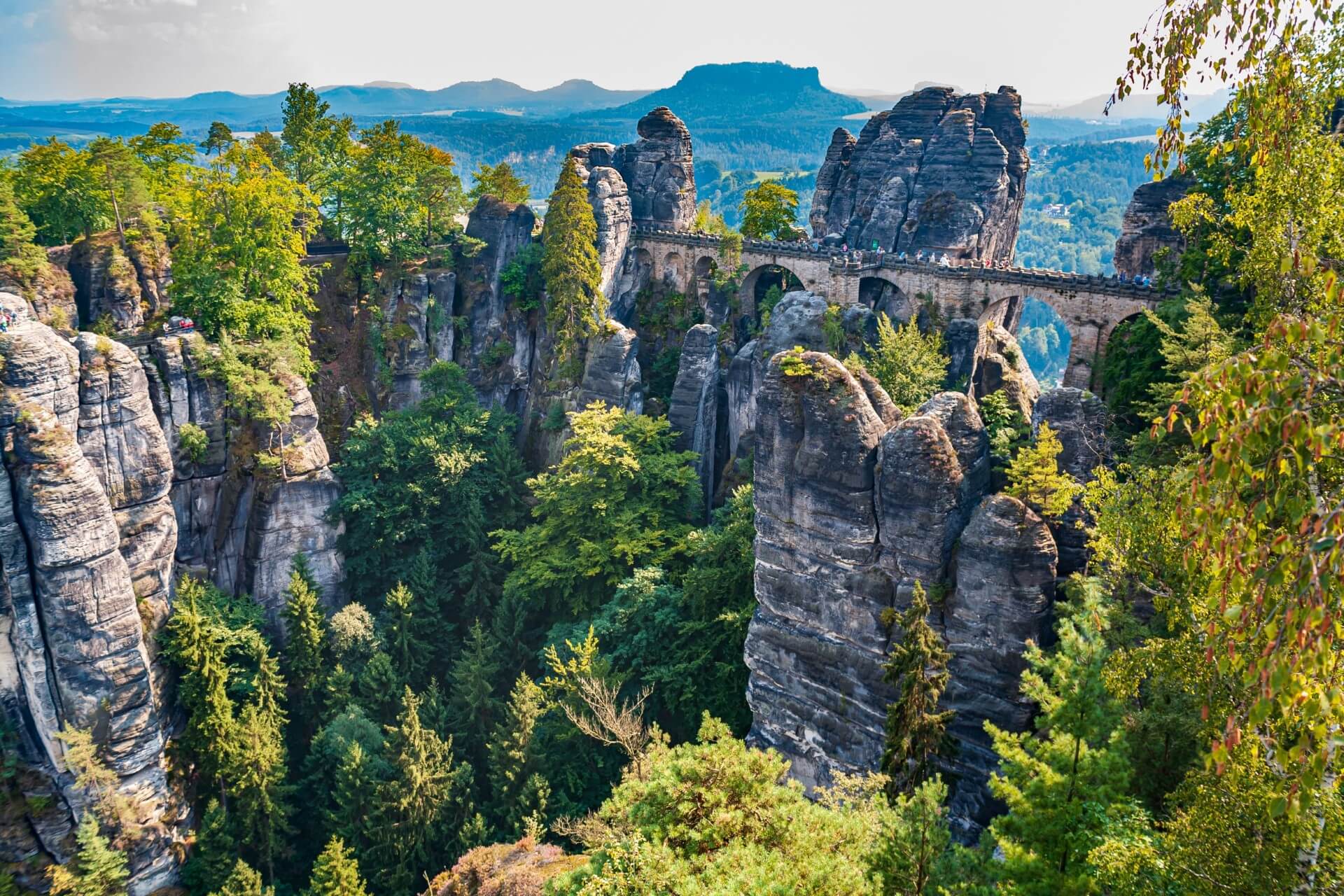
Saxon Switzerland is a national park stretching along the Elbe River valley on the Czech-German border. Its vast territory is home to many world-famous attractions. Arriving here for a day, you must visit the Bastei rock massif – cliffs rising above the Elbe River.
From the observation deck at almost 200 meters height, you will capture in photos and memory the magnificent landscape. The 75-meter Bastei Bridge, consisting of seven arches, is a must-see as it is the iconic symbol of Saxon Switzerland. The mysterious Königstein Fortress, perched 250 meters above the Elbe River, is located close to the town of Königstein within the park area.
The fortress is notable for its fifty buildings, a military history museum, and the deepest well in Europe. The most visited tourist spot is the Lichtenhainer Waterfall, where water is released every half an hour to music by opening a dam.
From the waterfall, it is worth visiting the town of Stolpen, where there is a castle with a well drilled into a basalt rock. If you head to the resort town of Rathen, you can watch a performance at the open-air rock theater, which seats 2,000 people. The combination of mountains, beautiful nature, and attractions in Saxon Switzerland makes this corner of Germany unique.
Top Things to See in Saxon Switzerland National Park
Mělník Castle
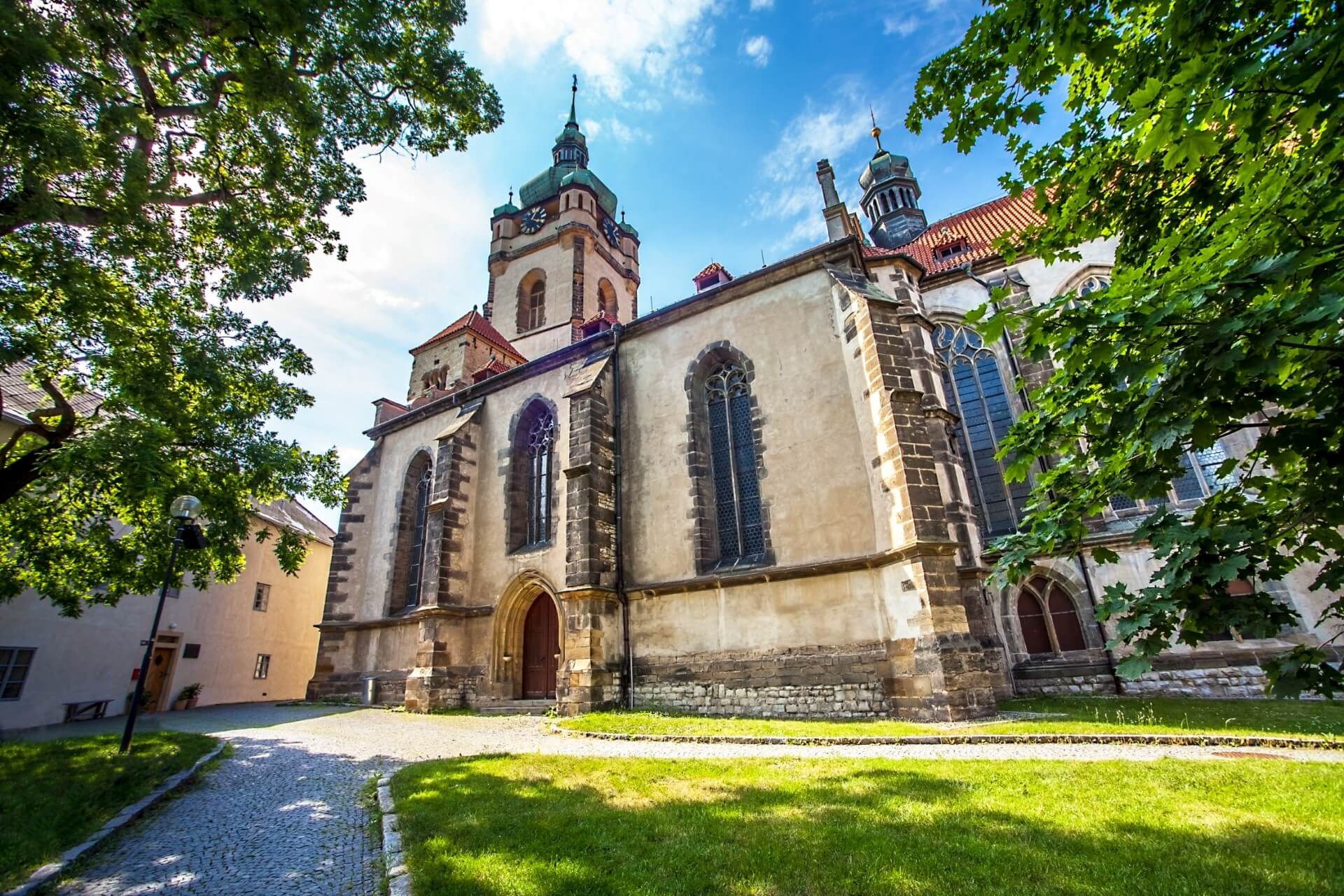
A trip to the unique Mělník Castle, located in a picturesque area near the town of the same name, 30 kilometers from Prague, where the waters of the Elbe and Vltava rivers meet, will leave you with many vivid impressions. This castle, which served as the residence of an aristocratic family for many centuries, remains a living historical structure to this day, welcoming tourists.
Half of the rooms are accessible for viewing, and tours are conducted by the count himself, who tells captivating stories related to the castle. Mělník impresses with the luxury of the interior of the halls, the coziness of the dining rooms, and the decor of the private chambers of the former owners. In the historical halls, rich collections of paintings, porcelain, and glass, sculptures, rare Baroque furniture, and hunting trophies amaze.
The Knight’s Hall is adorned with thematic paintings, and the displayed knightly armor and collection of weapons are of great interest. The count guides guests through wine cellars laid down by King Charles IV. It is also interesting to visit the chapel built during the time when the wife of Charles IV lived here. Mělník is often called the castle of dowager queens, as up to 30 royal wives were exiled here over several centuries.
Vienna
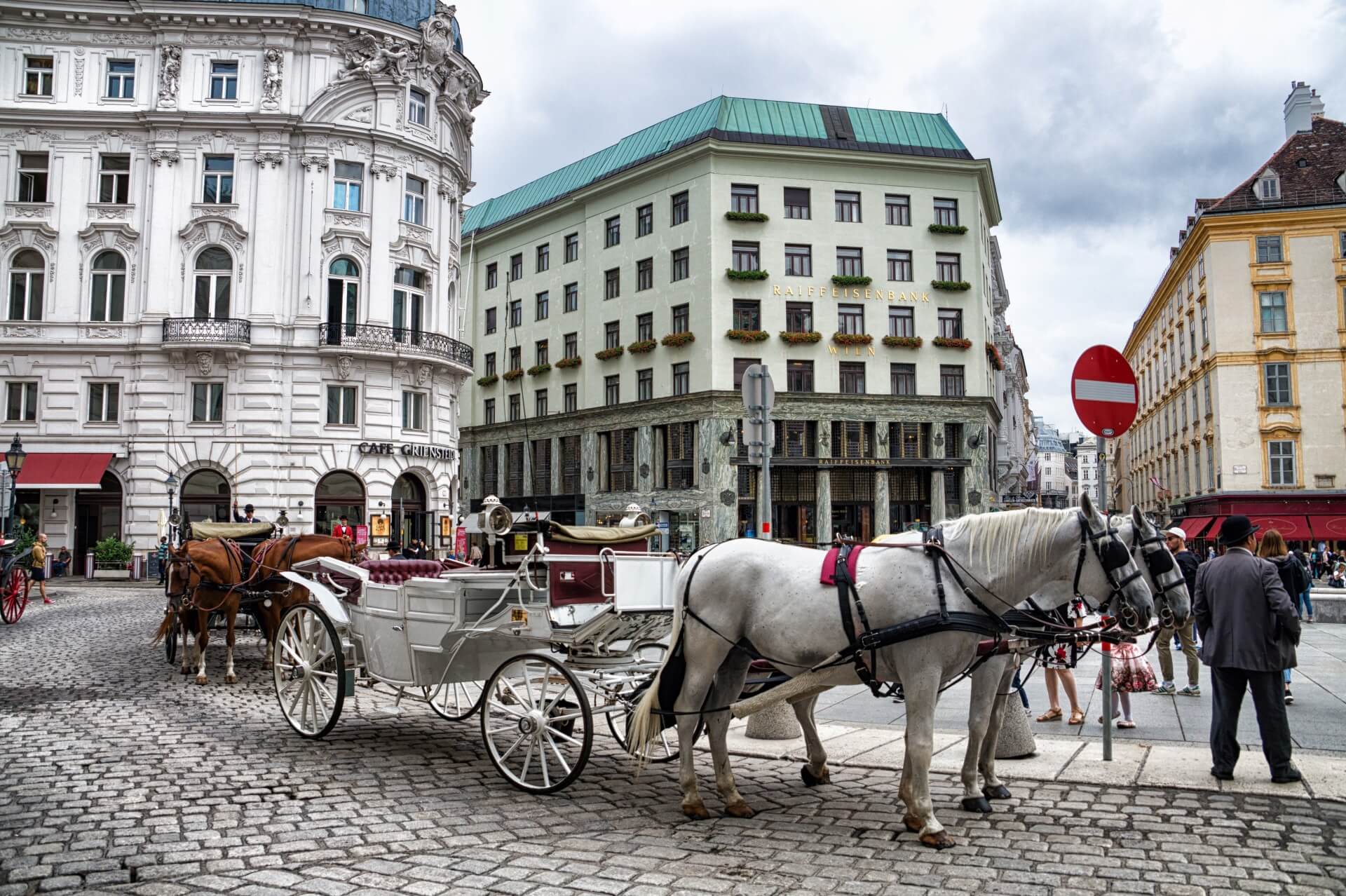
One of the popular one-day trips is to the capital of Austria, Vienna, which can be reached by bus in 4 hours. It is impossible to see all the attractions of the Austrian capital in one day, but you can admire Vienna’s tourist hallmark at Stephansplatz – the majestic St. Stephen’s Cathedral with its two uneven towers. Inside the cathedral, you will be impressed by the works of art from the Middle Ages and later eras, ancient tombstones, and the crypts of Austrian monarchs.
From the square, you can walk to Mozart’s house, located a few steps away, encountering several beautiful old buildings along the way. On Graben Street, you will admire the Leopold and Joseph fountains and see the Plague Column. Near the column is the beautiful Baroque church of Peterskirche. Nearby, you can enjoy sweets at the famous Demel confectionery. From here, it’s a short walk to the winter residence of the Austrian monarchs, the Hofburg, a majestic palace complex.
Close by on Josefplatz, you will be captivated by the Palffy Palace and the Augustinian Church. Exiting onto the ring boulevard, you will enjoy the view of the famous Vienna Opera and the buildings of different styles on Ringstrasse. The street will lead you to a tropical oasis – the Palace Garden with the Palm House and the Butterfly House. In addition to architectural masterpieces, Vienna is known for its unique monuments and museums, telling the history of the Austrian capital.
Brno
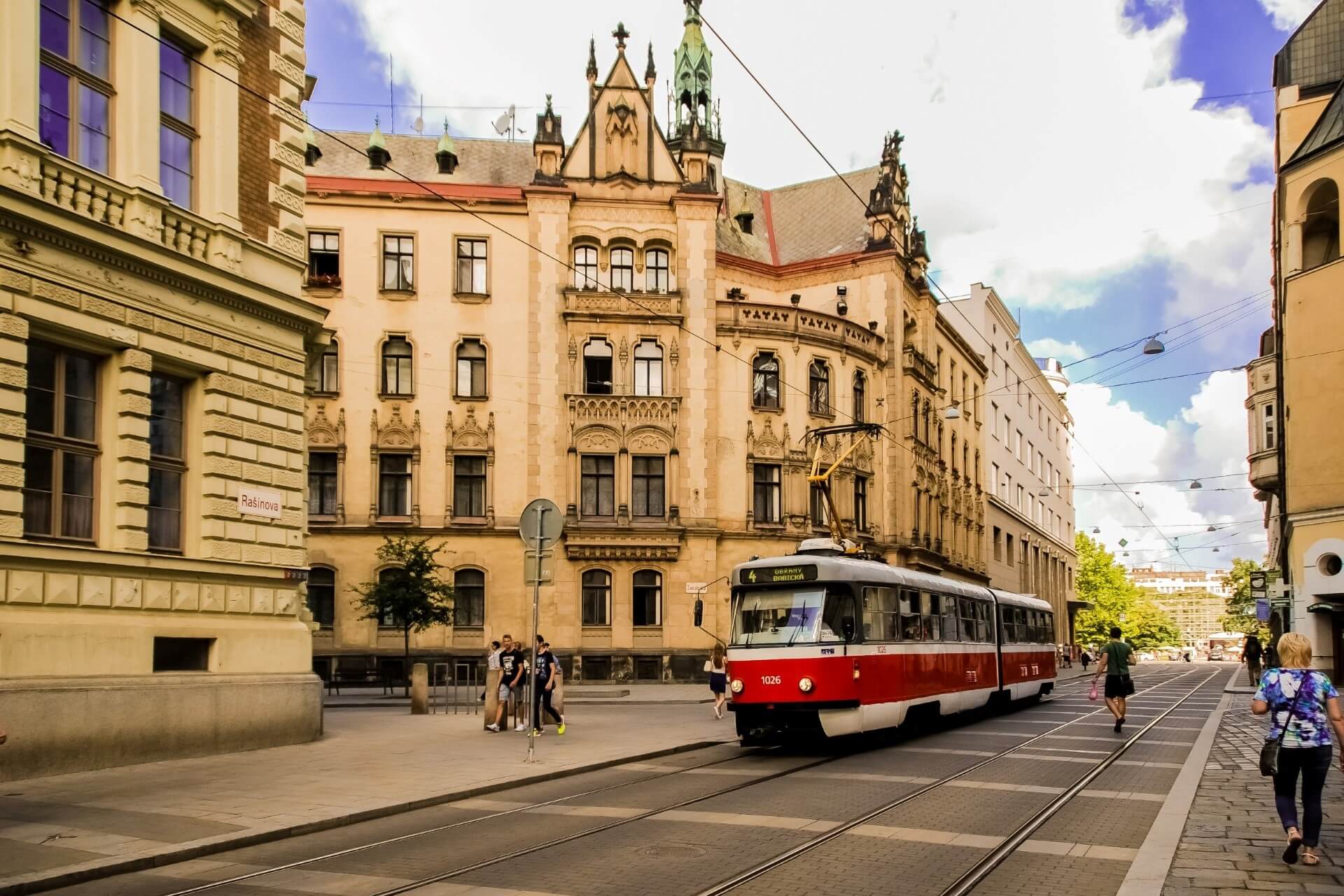
Brno, a city with an ancient history located 207 kilometers away, can be reached by bus or car in a little over 2 hours. Brno attracts tourists with its historic center, which has remained almost unchanged since the 13th century. In the city center, you will easily find the Old Town Hall, a symbol of the city.
The architectural design of the functioning Church of St. James, combining Gothic and Romanesque styles, will intrigue you. The old Špilberk Fortress and Castle, depicted on the 10-crown coin, amaze with their majestic size and picturesque surroundings. The architecture of the castle-museum harmoniously combines three architectural styles: Gothic, Renaissance, and Baroque.
From the castle’s observation deck, you can see a beautiful panorama of the city. On the Cabbage Market Square, the famous Parnassus fountain, with a sculpture of the goddess Europa taming a dragon, stands out. On the same square is the old Reduta theater building, and nearby you can admire the Dietrichstein Palace, which houses the historical museum.
The 18th-century Cathedral of Saints Peter and Paul, rising on Petrov Hill, is recognizable by its two tall spires visible from everywhere. Of interest among religious buildings is the Church of the Finding of the Holy Cross with the Capuchin Monastery. Here, you can see several burials of mummified famous Czechs and monks.
On the triangular Freedom Square, the House with Atlantes “At Four Fools,” the Plague Column topped with the sculpture of the Virgin Mary, and the mysterious Brno Orloj clock attract attention. Tourists usually take photos here as a memento of this beautiful city.
Nuremberg
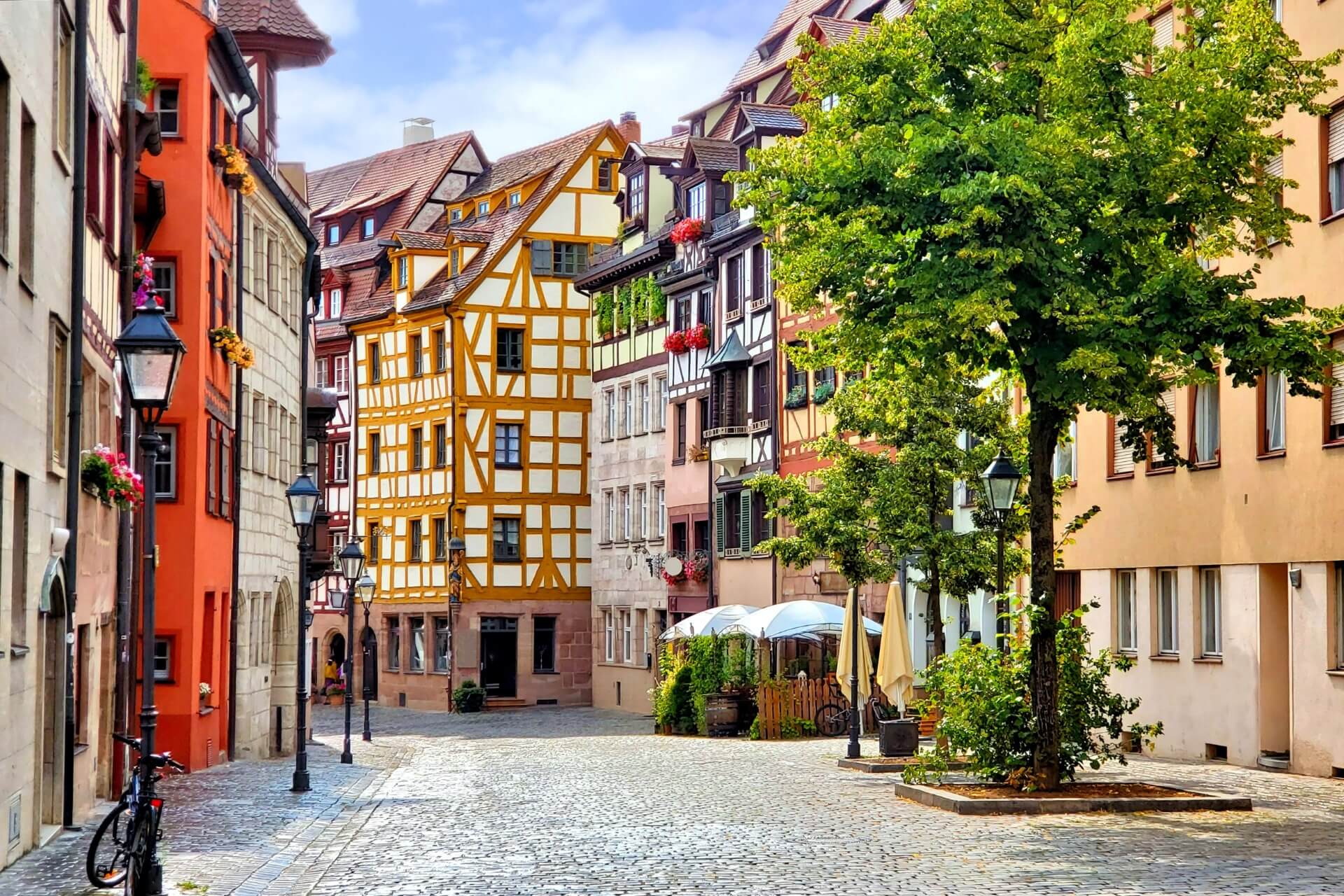
It is most convenient to travel to Nuremberg by bus. The Old Town, where all the attractions are concentrated, is crossed by the Pegnitz River. The 15th-century city wall surrounds the Old Town for about 5 kilometers. On different banks of the Old Town are two famous 13th-century churches – the Church of St. Sebaldus, the patron saint of Nuremberg, and the Church of St. Lawrence, notable for its exquisite interior and organ.
Heading towards the Market Square, make a stop on the Museum Bridge, which offers a stunning view of the city panorama. The main adornment of the Market Square is the Church of Our Lady, where every day at noon, clockwork figurines on the church facade perform a bowing movement. Nuremberg’s fountains have gained artistic value and captivating legends. The golden “Beautiful Fountain,” surrounded by sculptures depicting the city’s history, stands on the Market Square.
It possesses magical powers to grant wishes. Another fountain, “Marriage Carousel,” depicts scenes from family life in sculptures. Art lovers will remember visiting the Albrecht Dürer House-Museum, where the artist lived and painted his famous works. Nuremberg, the birthplace of the Nutcracker, will also be remembered for its Toy Museum and the aroma of Christmas gingerbread, sold year-round as a Nuremberg souvenir.
Munich
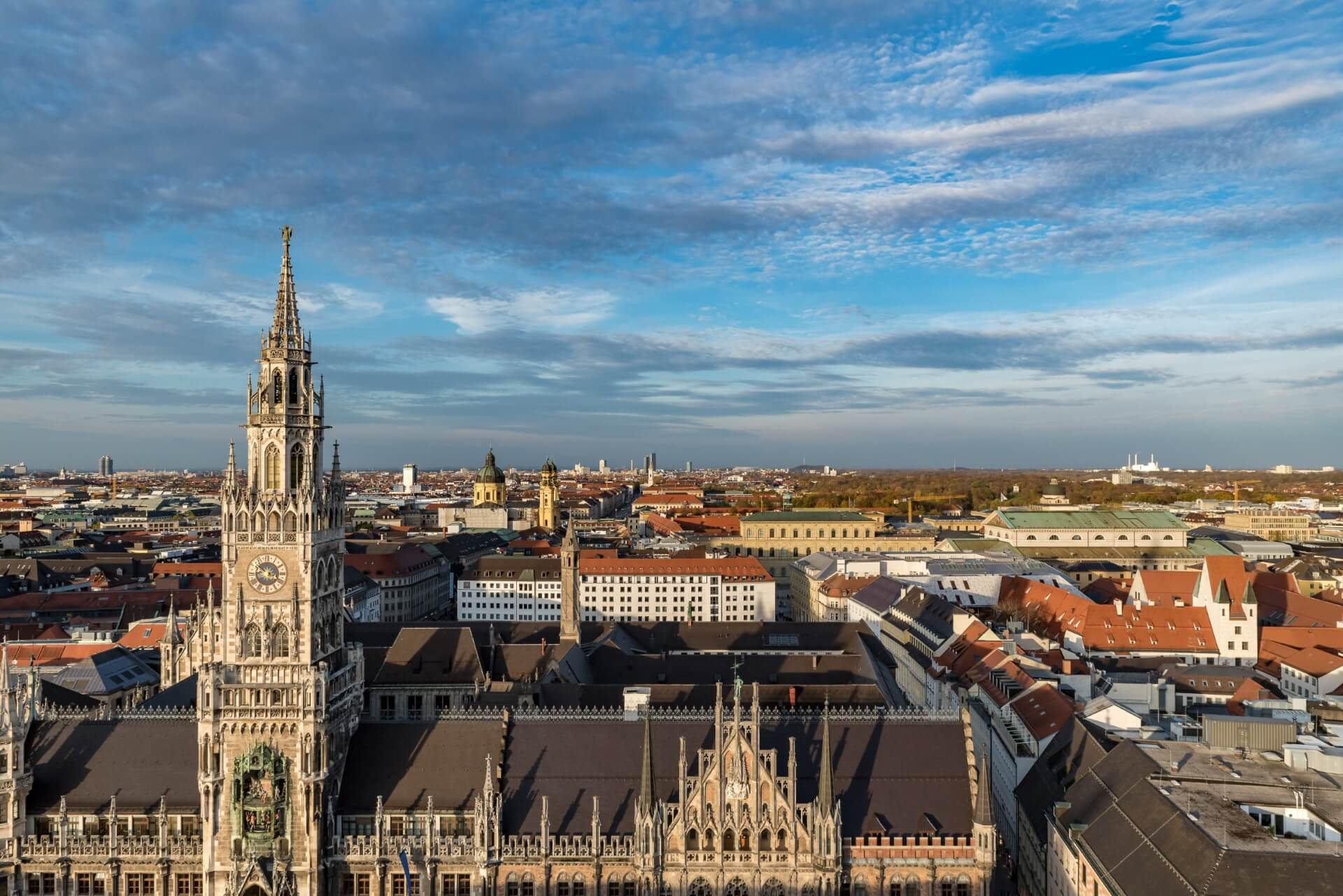
In the capital of Bavaria, Munich, located 380 kilometers from Prague, you can conveniently travel by train or bus. The journey takes 5-6 hours, and in one day, you can see some of its remarkable places. Focusing on the historical center, start your exploration at Marienplatz, where the first thing that catches your eye is the tall marble column of the Virgin Mary with a child, a scepter, and symbols of human sins.
The old Fish Fountain, crowned with a fish figure, is interesting. It is located in front of the New Town Hall, built in the Neo-Gothic style. The Town Hall impresses with its monumental tower, 85 meters high, and unique clock with 32 figurines depicting historical scenes from the city’s life during the chimes.
The New Town Hall faces a fairy-tale-like Gothic castle with numerous towers. This is the Old Town Hall with a sculpture of Ludwig of Bavaria on the facade and moon clocks with zodiac signs on the tower. It is worth visiting the Cathedral of Our Lady (Frauenkirche) with the “Devil’s Footprint,” which brings good luck, and its luxurious interior.
The Feldherrnhalle, an arcade hall – “Hall of the Bavarian Commanders” near Marienplatz, is notable for its sculptures cast from trophy guns. Munich will delight art and sculpture lovers with a vast collection of masterpieces of fine art from the Renaissance to the present day, housed in three Pinakotheks.
Berlin
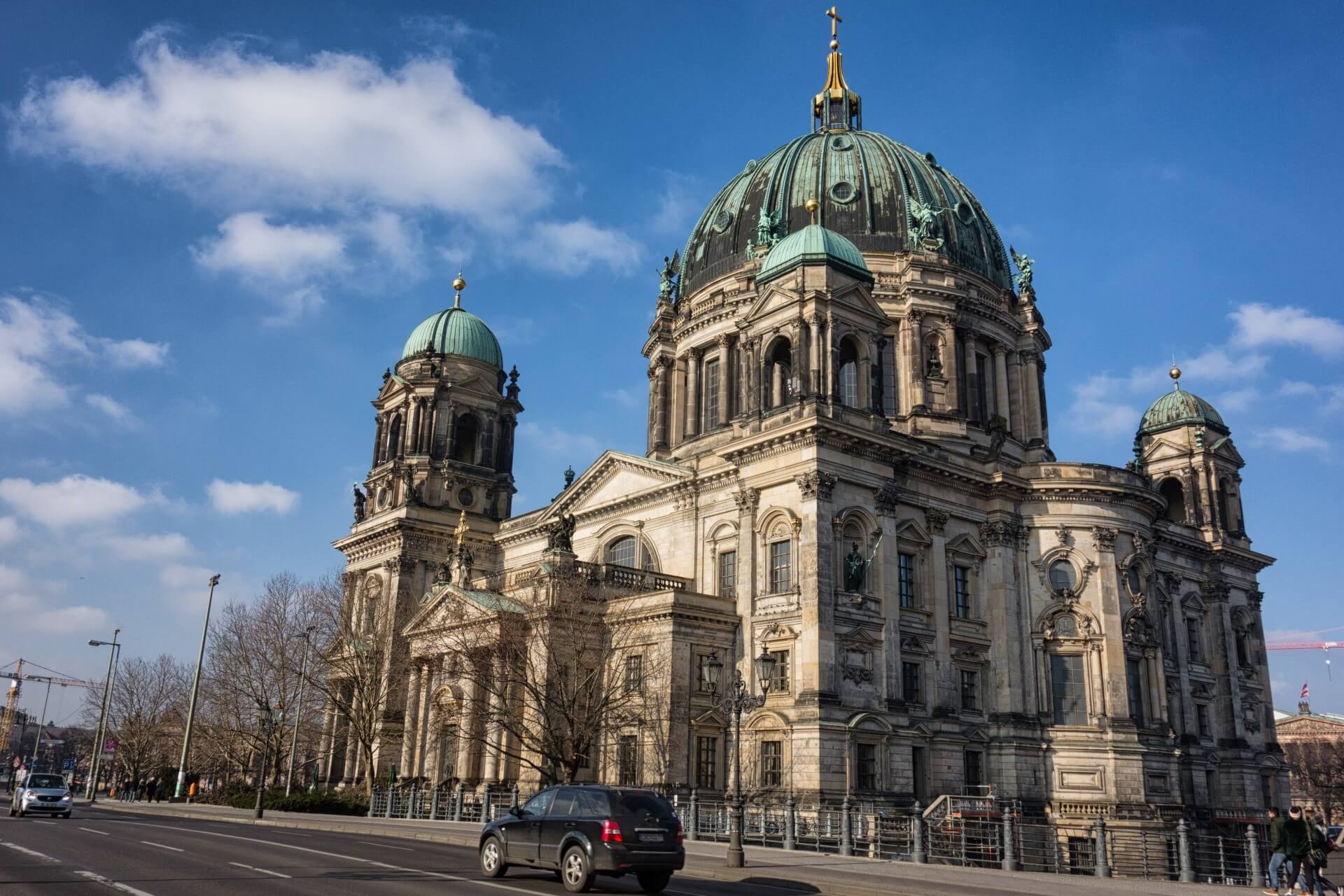
The capital of Germany is rightfully called one of the most beautiful cities in Europe, with many historical monuments and architectural masterpieces. Starting the tour from the main square – Alexanderplatz, named after the Russian emperor, you will see the TV tower and the World Clock, the Teachers’ House, and the “Friendship of Peoples” fountain. Walking along the Spree River, you will reach Museum Island with the Old and New Museums, the National Gallery, the Bode Museum, and the Pergamon Museum.
Each of them has unique collections from different eras and peoples. On Museum Island stands the Berlin Cathedral. It is a pleasure to stroll down Unter den Linden Boulevard, with its abundance of Baroque-style buildings, the Crown Prince’s Palace, and the 17th-century Arsenal. Reaching Bebelplatz, stop before the luxurious Baroque building of the Berlin Opera and the neoclassical St. Hedwig’s Cathedral.
At Gendarmenmarkt Square, you will admire the neoclassical Concert Hall building, facing the French and German Cathedrals with similar domed towers. Visiting Berlin, you must see the remnants of the Berlin Wall and the famous Brandenburg Gate – the Triumphal Arch adorned with the goddess Victoria on a chariot. The final highlight of your Berlin journey should be the Reichstag, unique for its blend of Neo-Renaissance architecture with late Baroque. The journey from Prague to Berlin takes 5 hours by bus.
Salzburg
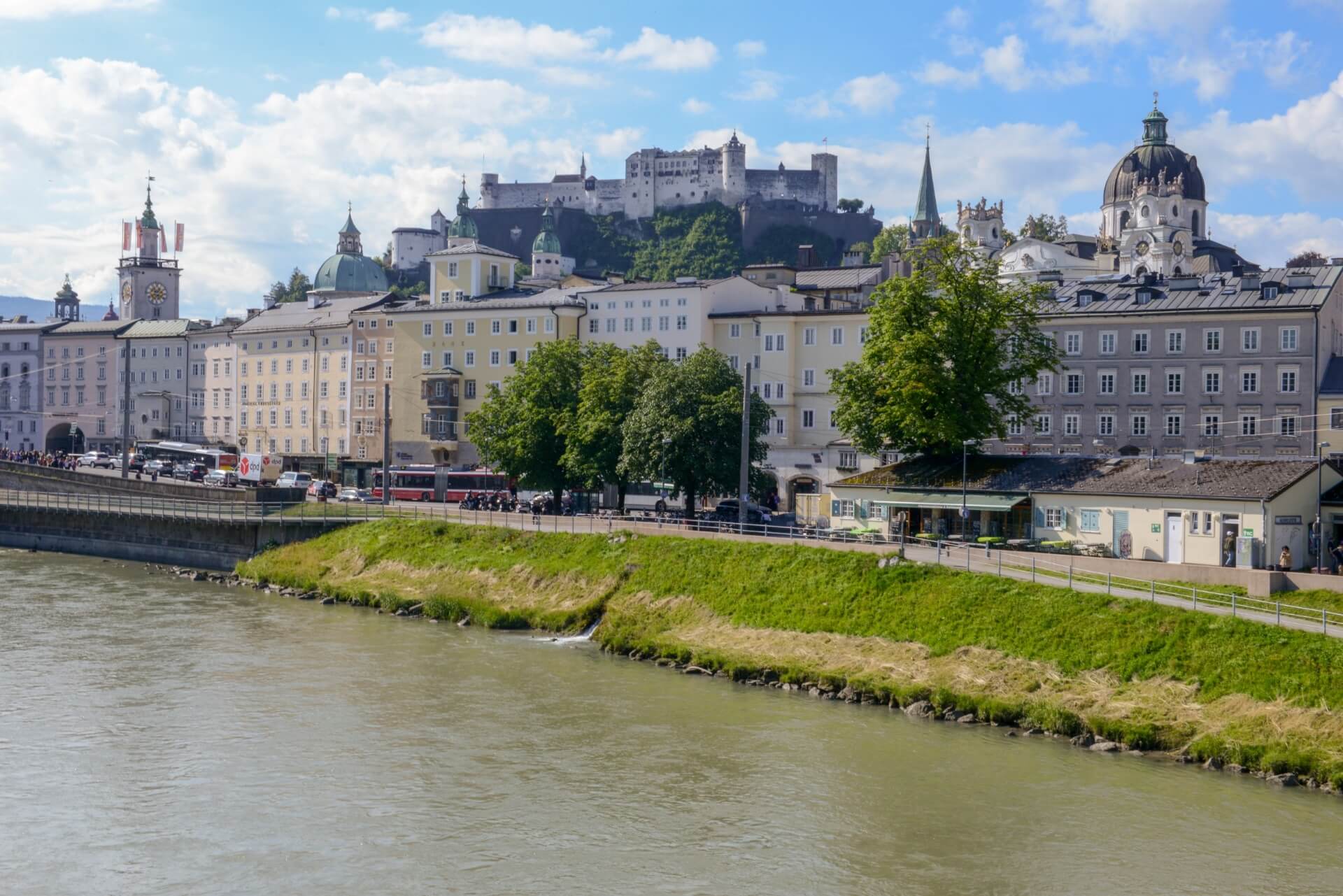
The old Austrian city of Salzburg is 271 km away. If you arrive by train, Rainerstraße Street, near the station, will lead you to the white Mirabell Palace, surrounded by a picturesque park with mythological sculptures. Admiring the stunning landscape design of the park, you will arrive at Makartplatz, where the Mozart family’s house is located.
To capture the panorama of Salzburg’s center and the Hohensalzburg Fortress, climb Kapuzinerberg Mountain by stairs or a winding path. Crossing to the other side of the river, it is a pleasure to stroll along the main shopping street of the Old Town, Getreidegasse, where you will see the house where Wolfgang Amadeus Mozart was born.
After the walk, it will be pleasant to rest near the Collegiate Church with its cucumbers, in the Furtwängler Park. From here, it is a short walk to the Archbishop’s Residence, which houses an art gallery and the Salzburg Cathedral, where Mozart was baptized. Besides the rich decoration of the cathedral, the collections of the church museum are impressive.
Leaving the cathedral, take the funicular up to the Hohensalzburg Fortress, resembling a small town protected by fortress walls. In its main tower, there are museums: the Military History Museum and the Marionette Museum. If time permits, art lovers should visit the Salzburg Gallery, which has a collection of 16th-19th century paintings displayed in a luxurious setting.
Bamberg
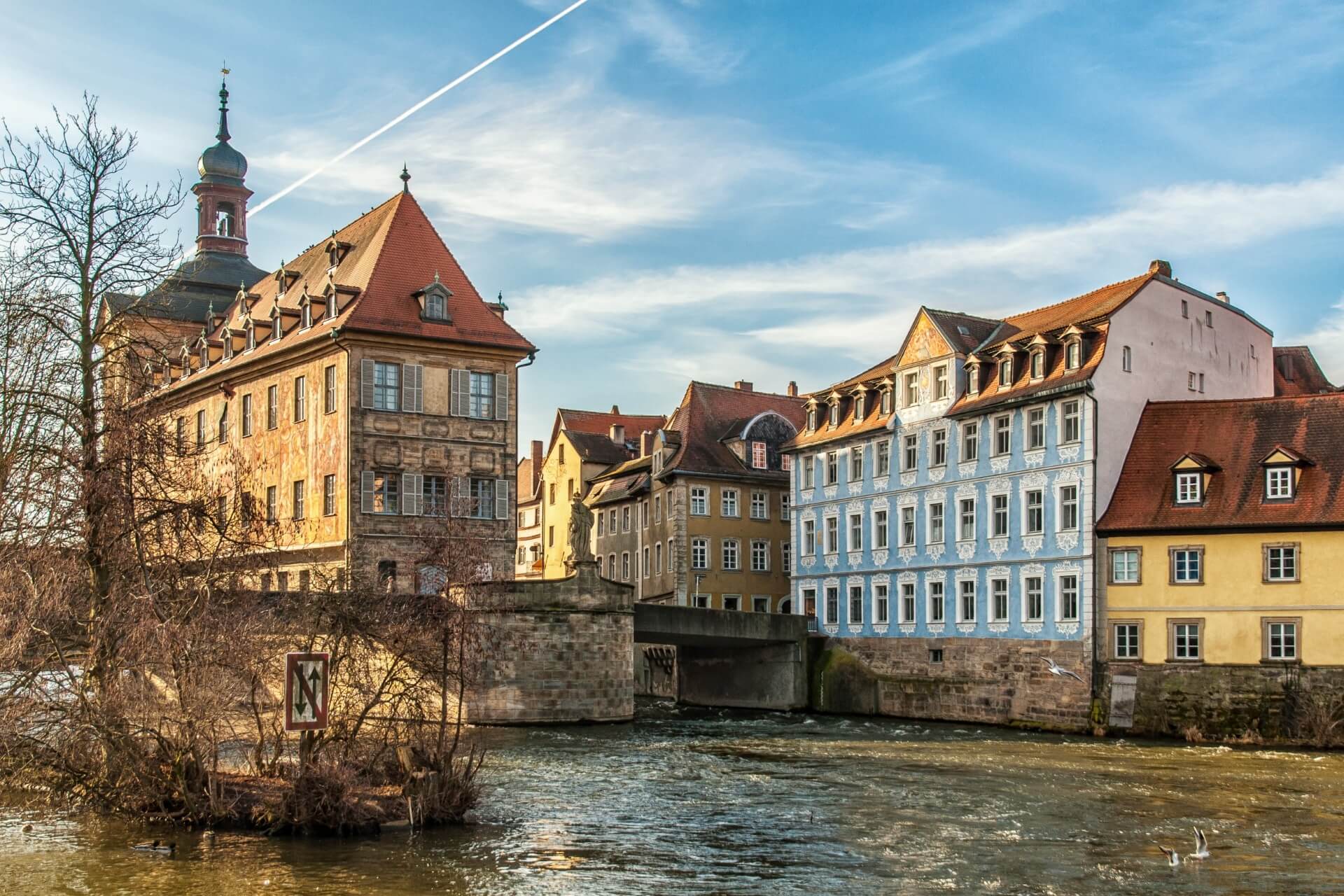
The distance to Bamberg, with its thousand-year history, is 253 kilometers. Its fairy-tale-like Old Town is under UNESCO protection. Heading to the Old Town Hall, you will encounter two ancient churches: St. Gangolf’s Church (12th century) and St. Martin’s Cathedral on Gruner Markt Square.
The Old Town Hall, built on an artificially created island, is decorated with beautiful frescoes and a collection of royal porcelain in its grand hall. From the town hall, admiring the charming view of colored and half-timbered houses, you will reach Bamberg Cathedral. It is famous for the Bamberg Horseman sculpture (1235), the tomb of the emperor and his wife depicting scenes from their lives, the tomb of Pope Clement II, and the Chapel of the Holy Nail, which crucified Jesus.
You must visit the Rose Garden, located near the cathedral. Created in the 18th century, it amazes not only with its abundance of flowers but also with fountains and sculptures in Baroque and Rococo styles. The garden offers an enchanting view of St. Michael’s Monastery on the hill. It is called the “Botanical Garden” because of the plant frescoes decorating the interior.
Descending from the monastery leads to the Regnitz River embankment in the district known as “Little Venice,” where each half-timbered house has its own boat dock, and boats float along the canal. A trip to Bamberg leaves many vivid impressions in memory.
Telč
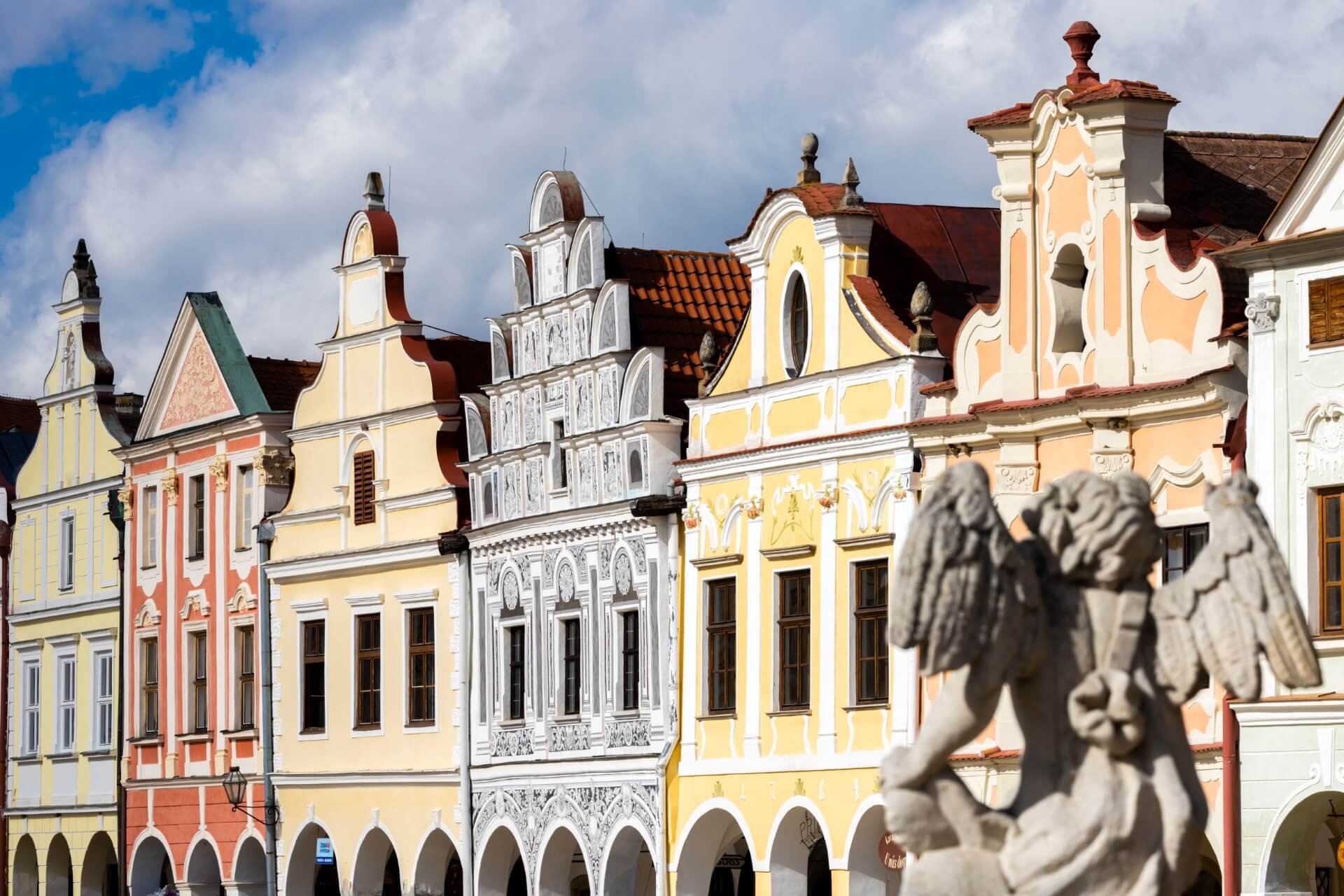
Telč, a Czech town located 160 kilometers from Prague, attracts with its magical atmosphere emanating from the old “gingerbread” houses reflected in the lake of Telč Castle and historical monuments. Telč is called a city-museum, Moravian Venice. Let’s start the journey from the main square, Zachariáš, reminiscent of a fairy tale.
On both sides along the cobbled road stretches a garland of unique colorful houses adorned with intricate stucco and cherubs. Behind them, you will reach the city square with the Marian Column, executed in a minimalist style. Next, head to Telč Castle, an architectural masterpiece preserved in its original Renaissance style.
In its luxurious Golden Hall, you will be amazed by the ceiling carvings and see the portrait gallery of the entire Zachariáš family, the castle’s former owners. In the Knight’s and African Halls, the collection of combat and hunting trophies is of interest.
Adjacent to Telč Castle is the Chapel of All Saints, built by Italian architects. Here, Zachariáš and his first wife are buried. The oldest building in Telč, the Church of the Holy Spirit, with its 49-meter tower, is left to be seen. In addition to the 17th-century bells, you can view a painting exhibition on the tower and enjoy a picturesque view of the fairy-tale town from the observation deck, which will stay in your memory for a long time.
Třebíč
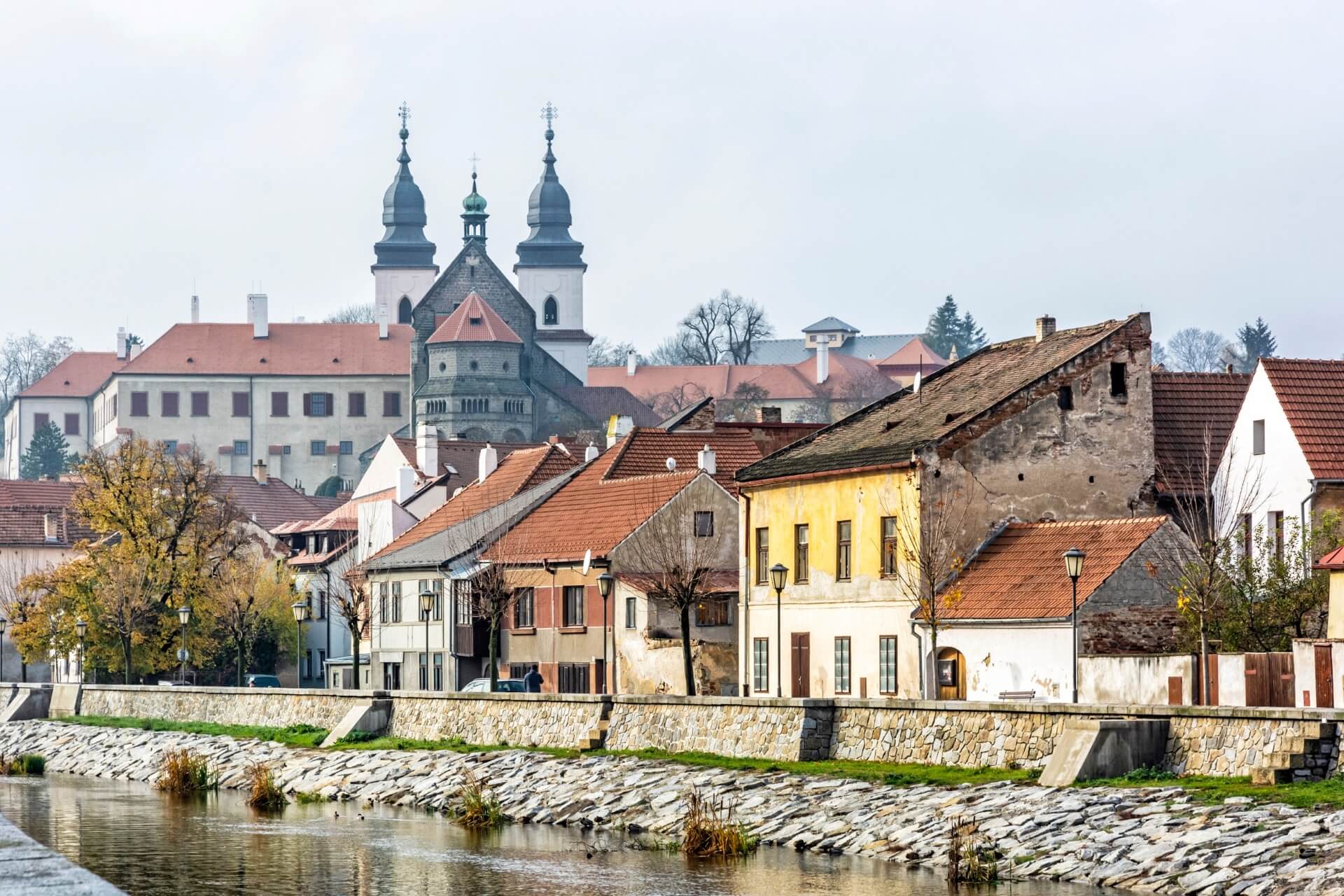
Třebíč, located 142 kilometers from Prague, attracts tourists with its beautiful castle, the historical center of the town. Třebíč arose on the site of a former monastery, from which the basilica remained in the castle. Behind the fortress walls, a town began to grow in the 13th century. On the central Karlova Square, you will see two Renaissance buildings – the Black and Painted Houses. Their facades catch the eye with hunting scenes depicted using the sgraffito technique.
Next are Třebíč’s town hall and the monument to Cyril and Methodius. Martin’s Square with the 75-meter tower of St. Martin’s Church, preserved from the 13th century, is also worth seeing. At a height of 35 meters, the tower has an observation gallery from which tourists can admire a picturesque city panorama. On the tower, you will see one of Europe’s largest clock faces.
In small Třebíč, UNESCO has recognized two attractions – the Jewish Quarter with its cemetery and the Basilica of St. Procopius, including them in the World Heritage List. The unique architecture of the Basilica of St. Procopius, expressed in a mix of Gothic and Romanesque styles, is noteworthy. The main entrance to the church, the “Gate of Paradise,” is an architectural gem, created by a series of arches producing a sense of volume.
Thus, even on a one-day trip from Prague, you can see many attractions that will leave a lasting impression on you.

